The Miscellany News
October 9, 2025

October 9, 2025
Emma Brown News Editor
On
Monday, Sept. 29, Vassar’s chapter of Students for Justice in Palestine (SJP) released a statement condemning the College’s initiative with the United States Military Academy, commonly known as West Point. The statement cited the U.S. military’s involvement in international conflict and its support of Israel in the ongoing genocide in Palestine. The following week, SJP members tabled outside of Main Building, distributing pamphlets and information about their petition calling for an end to the initiative.
The Vassar-West Point Initiative was founded in 2018 after the College received a grant from the Mellon Foundation. The initiative encourages collaboration between the two campus communities, aiming to build understanding between civilians and the military. “The Initiative allows Vassar students to understand and experience what it is to be in a military academy,” wrote Vassar President Elizabeth Bradley in correspondence with The Miscellany News for this article. According to Bradley, Vassar had previously hosted conferences, tours and research demonstrations that West Point cadets were invited to attend. In February 2024, Vassar students and faculty visited West Point to learn more about the academy.
SJP’s statement included background regarding the U.S. military’s role in the mili-
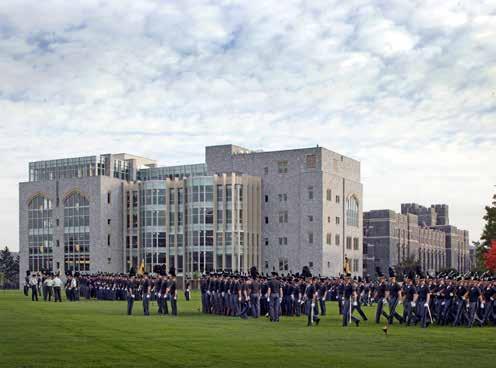
tary-industrial complex, as well as the genocide in Gaza, before providing a timeline of Vassar’s relationship with West Point. In a correspondence with The Miscellany News, a co-chair of SJP, who requested to remain anonymous, wrote, “West Point, as a military academy, is sharing knowledge and training directly with soldiers who served in Gaza as agents of genocide. Aside from the direct connection, West Point is invested in the military-industrial complex, as we explain in our pamphlet. Military-academic
Henry France Sports Editor
The 2025 Poughkeepsie Regatta took place on Saturday, Oct. 4, on the Hudson River, just 10 minutes from Vassar College’s campus. This year, crews as local as the Hudson River Rowing Association were joined by competition from Greenwich Academy, Augustine Classical Academy and more. In years past, the Vassar men’s and women’s rowing teams and Marist’s crews have competed in the event. This year’s Poughkeepsie Regatta was a joyous event, no doubt, but the race lives in the footsteps of a storied and rich history of rowing on the same stretch that high school and club teams competed on on Sunday.
The Intercollegiate Rowing Association (IRA) was established by Cornell University, Columbia University in the City of New York and the University of Pennsylvania in 1891, following two years of racing between the crews in their annual race in New London, Connecticut. On the same water, Harvard and Yale continued to hold “The Race,” their exclusive head-to-head duel that takes place to this day, every year in June. In their first year of formation, the IRA abandoned their course in New London—and the exclusive aura of Yale and Harvard—and established its own site for an annual regatta in 1895. The Hudson River in Poughkeepsie,
Inside this issue
3 NEWS
Jackson Hrebin reports on a lecture from Sherrilyn Ifill 84 on reimagining democracy.
New York, was chosen as home for the annual collegiate rowing championship.
By 1899, the four-mile race had become a phenomenon known as the “Poughkeepsie Regatta.” To accommodate the thousands of spectators, dozens of railroad cars were repurposed as grandstands that moved down the tracks, parallel to the racing crews.
The Regatta grew in popularity. In its first years, the Eastern schools made up the field, and only a single, four-mile varsity eight race was held. As more teams flocked to the Hudson Valley, the race expanded. A two-mile Freshman Eight race, three mile Junior Varsity Eight race and four mile Varsity Eight race became custom. Descending into Poughkeepsie was no simple task, and the dominant crews from the University of California and University of Washington would typically depart weeks in advance of the championship, travelling across the country on railroad, and rowing out of the same buildings that line the river to this day. But the trip paid off when, in 1923, the University of Washington became the first West Coast team to win the Poughkeepsie Regatta. Washington and California have dominated collegiate rowing since, winning the national championship more often than not. It was under the Walkway Over the Hudson bridge that Joe Rantz and his crew from Washington qualified to rep-
See Regatta on page 14

collaborations like the Vassar-West Point initiative legitimize this system wherein corporations profit off of the genocide.”
The organization concluded the statement by discussing how West Point has allegedly used Vassar’s science facilities to “further military technology.” The statement referenced an event hosted by Vassar in February 2025, during which West Point cadets visited the College and observed a Vassar Physics and Astronomy professor perform
See West Point on page 3
Tina Mao Guest Columnist
Asa part of the Asian diaspora, global Asian literature is one of the main media through which I understand my personal experiences and political positionality. I have always wished that there would be a professor in the English Department who specialized in literature of the Asian diaspora. When I found out that Professor Alden Sajor Marte-Wood was hired to fulfill that exact role, I was beyond excited to meet him.
Thursday, Oct. 2 was my lucky day—I had the pleasure of having a conversation with Professor Marte-Wood, who joined the English Department as an Assistant Professor this fall semester. Marte-Wood and I sat on a bench outside Sanders Classroom, relishing the warmth of Poughkeepsie’s early fall as we unpacked our upbringings, our complicated relationship with the term “Asian American” and the literature of the Asian diaspora that shapes our sense of place.
Marte-Wood was born and raised in the Los Angeles area by a Filipina mother, who moved from the Philippines in the ’70s, and a white father. As a mixed race Filipinx American, he grew up with his mom’s massive extended Filipino family.
Paige Hahn Assistant Copy Editor
Taylor Swift’s new album, “The Life of a Showgirl,” has made a dramatic entrance in today’s music scene, creating a stark division among the “Swifties.” While some fans love the romance and catchy pop sound of the album, others are critical of her lyricism and storybook portrayal of her engagement to football player Travis Kelce. Journalistic criticism has also varied widely. A five-star Rolling Stone review argues that “The glitzy sheen across these glitter gel pen songs doesn’t mean she’s skimping on her signature detailed storytelling.” On the other end of the scale, The London Evening Standard rips the album apart: “It’s a wellworn story that rich people can still be miserable, but when you’re a literal billionaire it’s a bit tone deaf to complain about the lack of glamour.” After listening to the album twice, reading reviews and—of course—consulting what the internet has to say, here are my thoughts.
I am a Taylor Swift fan myself, and a lover—pun intended—of some of her more subdued, lyric-heavy albums, like “folklore” and “The Tortured Poets Department,” which received a similarly controversial reaction. While I was a defender of “The Tortured Poets Department,” I have to say that the majority of “The Life of a Showgirl” is
Aurelia Harrison review student band Bedlam’s new single, “The Tower.” 4 ARTS

not for me. This is not to say that I uniformly hate it; personally, I really like the English major-coded opening song, “The Fate of Ophelia,” as well as the edginess and power of “Elizabeth Taylor” and “Father Figure.” I can definitely see myself singing along to these tracks in the car, and their poppy melodies will no doubt be stuck in my head for weeks. Yet the lyrics and subject matter for many of the songs did not fit with the jazzy, starlet “showgirl” aesthetic that I, and many others, expected.
To me, the mismatch between the album’s content and promotional photos, as well as the implicit promise that “Showgirl” would peel back the curtain on the Eras Tour, was Swift’s biggest faux pas. The only songs that offer an insight into her life during the tour are “Elizabeth Taylor” and the title track, “The Life of a Showgirl,” which features Sabrina Carpenter, a collaboration that made for a gorgeous track. Otherwise, this lack of thematic cohesion seems to be a source of criticism of the album as a whole, at least in online conversation and social media. I went into every song wanting to like it, and if I had not been so focused on the lyrics, I would have enjoyed the album more. Two of my favorite things about Swift are her skillful, poetic writing and feminist, “girl power” persona, both of which were not at their best in this album.
See Swift on page4
7 FEATURES
Yaksha Gummadapu takes readers on a sentimental apple picking adventure.



Tired of long lines at the campus mailroom? Worried about lost packages or changing addresses every year?

With Poughkeepsie Shipping Inc, you get:
✓A permanent street address (not a dorm number)
✓ Secure, private mailbox with package notifications
✓ Easy pickup - evenings & weekends available
✓ Perfect for Amazon orders, study abroad , or running your side hustle
Special Vassar Student Pricing:
$20/month OR $199/year with student ID
Bring a friend ➔ you both get $10 off!

EDITOR-IN-CHIEF MANAGING EDITOR SENIOR EDITORS
CONTRIBUTING EDITOR NEWS EDITORS
ASSISTANT NEWS EDITOR ARTS EDITOR
ASSISTANT ARTS EDITORS
FEATURES EDITOR
ASSISTANT FEATURES EDITOR
OPINIONS EDITOR
ASSISTANT OPINIONS EDITORS
HUMOR EDITORS
ASSISTANT HUMOR EDITOR SPORTS EDITORS
ASSISTANT SPORTS EDITOR DESIGN EDITORS
ASSISTANT DESIGN EDITOR COPY EDITORS
ASSISTANT COPY EDITORS
GRAPHICS EDITOR GAMES EDITOR
Carina Cole
Allison Lowe
Darja Coutts
Luke Jenkins
Soren Fischer
Clara Alger
Julian Balsley
Emma Brown
Hadley Amato
Madeleine Nicks
Grace Finke
Aurelia Harrison
Ben Kaplan
Yaksha Gummadapu
Sydney Jones
Jacob Cifuentes
Ian Watanabe
Zoe Rodriguez
Emma daRosa
Josie Wenner
Wren Buehler
Henry France
Casey McMenamin
Holland Kaplan
Molly Delahunty
Lucas Seguinot
Amelia Gracie
Kathryn Carvel
Anabel Lee
Sadie Bakken-Durchslag
Paige Hahn
Annie McShane
Sadie Keesbury
Olivia Blank

ASSISTANT GAMES EDITOR SOCIAL MEDIA MANAGER
LIVE EVENTS CHAIR WEBMASTER REPORTERS/COLUMNISTS
CARTOONIST COPY STAFF
Mia Liloia
Denver Brown
Hunter Farhat
Jordan Alch
Eduardo Culmer
Armaan Desai
Noah Duncan
Lora Janczewski
Brendan Kenendy
Evan Seker
Erin Thatcher
Andrew Chu
Nikola Parker Cooperman
Eliott Evans
Quinn Kou
Gabrielle Lyman
Ren Nicolau
Tess Novack

Just minutes from campus l Convenient hours for busy student schedule
➔ Sign up in-store today!
POUGHKEEPSIE SHIPPING INC
825 Main Street Poughkeepsie, NY 12603
845-625-1177
a demonstration of the recently acquired quantum computer. In their statement, SJP further speculated that West Point cadets may have been given some level of access to Vassar’s quantum computer for use in military research. SJP alleged, “Despite the lack of transparency about how WP [West Point] is using Vassar’s quantum computer, we know that this collaboration enables WP cadets to develop technology that will threaten personal privacy, advance war profiteering, and automate genocide… The WP students using our computer will spend careers mastering and refining larger ones. They will be at the forefront of quantum computing, with Vassar’s help.”
In the week since the statement was released, Vassar faculty and staff have communicated with Miscellany News reporters to explain their perspective on the quantum computer’s use. Jenny Magnes, Vassar Professor of Physics and Astronomy and head of the Vassar-West Point Initiative, explained, “Our quantum computer is used to demonstrate quantum states to Physics students, enabling them to gain a better understanding of quantum theory. Vassar Physics faculty and select Vassar students have access to the quantum computer… West Point has no access to the quantum computer. We have only demonstrated the quantum computer to West Point personnel for academic purposes.”
In their statement, SJP expressed that in continuing its collaboration with West Point, “The college risks materially supporting WP’s development of technology equipped for genocide.” The statement also alleged, “Quantum research aims to optimize military operations, including advanc-
ing systems of AI-targeting and autonomous weapons technology that Israel is using to carry out mass murder in Gaza.”
Quantum computers are driven by units of information called qubits. Quantum computing allows for the computer to be in more than one state at once. Quantum states can be compared to two sides of a coin: While a standard computer could exist in a heads or tails state, quantum computers can occupy both at the same time. This gives it the capability to process large amounts of data in a short amount of time. This ability to analyze data, as well as the computer’s potential to decrypt classified information, makes it a useful tool for the military. However, according to the Congressional Research Service, to accomplish a task such as decryption, a quantum computer would need to have approximately 20 million qubits. According to a Vassar Physics and Astronomy faculty member, Vassar’s computer only possesses two qubits.
Central to SJP’s concern regarding the quantum computer is West Point cadets’ possible future access to it. “We’re not trying to destroy the quantum computer or stop non-military, non-surveillance quantum research,” wrote the co-chair of SJP. “The fact that the briefing on the computer happened once means it can happen again, so we want a pledge that the college won’t allow that in the future.”
SJP’s statement cited a quote from Colonel Peter Chapman, head of West Point’s Physics and Nuclear Engineering Department, that appeared in an article covering the Vassar Physics and Astronomy Department’s presentation of the quantum computer to West Point students. In the article, Chapman said, “Going forward we plan to see
what kinds of joint research opportunities we can develop.” In response to SJP’s concern about collaborative research, Magnes wrote, “At this point, there are no specific plans for joint scientific research.”
Despite noting to Miscellany News reporters that they were happy with Vassar’s acquisition of the quantum computer, a Vassar sophomore majoring in physics who wished to remain anonymous wrote, “I am not anti-West Point and Vassar collaborations, but there are many things to be wary of. I feel like our partnership is very one-sided; they are using our facilities and our equipment for what at least seems like no return on our end. I also agree with SJP’s message about how Vassar is complicit with the imperialistic military complex with this partnership.”
Members of SJP emphasized that their concerns regarding West Point extend beyond the issue of the quantum computer and potential research collaborations. “SJP’s [statement] is also not just referring to the quantum computer in and of itself,” said Mateo Tavarez ’26, an SJP member and Vice President of the Vassar Student Association (VSA). “That is not the only point of harm that they believe is helping materialize harm elsewhere, it’s just the relationship in and of itself, being partnered with West Point as a whole.”
In response to SJP’s criticism of the initiative, Magnes wrote, “It appears that this criticism is based on a lack of understanding of the West Point initiative. We invite SJP to engage in a direct and productive dialogue so that they may understand the scientific context.”
According to sources from SJP, the organization’s petition had already amassed upward of 400 signatures by Oct. 3—less
than one week after the initial statement’s release. Reflecting on conversations with other students, the co-chair of SJP said in an interview with The Miscellany News, “Students have mostly expressed surprise and support. It seemed like common sense to have no military presence on campus.”
The co-chair acknowledged that, despite considerable support for SJP’s goal, not all students have endorsed the dissolution of the initiative. “It’s hard to quantify, but there are always a couple people—maybe three or four—who express disinterest, or say they have family in the military, or are Zionists. But overwhelmingly, the response has been positive, even from students who aren’t very political.”
SJP has decided to focus its attention on West Point this school year. Last year, the organization focused on advocating for Vassar’s divestment from military and surveillance companies, but was ultimately unsuccessful in their push. “We were looking for ways to have a campaign that had a more material goal,” said the SJP co-chair. “Divestment and boycotts are super vague, but West Point is directly training soldiers in Gaza. The military is developing technology that’s being used by Israel right now. So this is a direct connection between Vassar and the genocide that’s easily targetable.”
Following the release of SJP’s statement, VSA cabinet members have worked to facilitate a conversation between the Physics and Astronomy Department faculty and members of SJP in the hopes of reaching an understanding about the quantum computer and the purpose of the initiative. According to Tavarez, the groups have a tentative plan to meet on Friday, Oct. 10 to discuss the organization’s concerns regarding the initiative.
Ifill ’84—civil rights lawyer and author—joined Professor of Sociology Dianne Harriford for a moderated discussion about reimagining democracy in the Villard Room on Friday, Oct. 3. Ifill served as President and Director-Counsel of the National Association for the Advancement of Colored People Legal Defense and Educational Fund (LDF) from 2013 to 2022, and is currently the Vernon Jordan Distinguished Professor in Civil Rights at Howard Law School. During the conversation, Ifill spoke candidly and personally about the threats facing democracy and equality in the United States.
Ifill began her discussion by reflecting on the complicated journey she and other civil rights advocates have undertaken. While highlighting important achievements, such as the Civil Rights Act of 1964, Ifill also characterized the American legal framework as unjust and incomplete in regards to racial equality. When asked about the historical struggle for civil rights during the talk, Ifill noted, “So much of this work is compromise, we shouldn’t presume or fool ourselves into believing that what we had was actually what we wanted. What we had was what we could get.”
Ifill also argued that many established rights are currently being undermined. Recently, the federal government has been accused of dismantling crucial privileges intended to provide equal opportunities and visibility for Black Americans and other minorities. For example, President Donald Trump’s attack on diversity, equity and inclu-
sion as well as his administration’s erasure of Black American history from museums and national archives has ignited fierce backlash. When confronting this changing political landscape, Ifill insisted, “I will not go back. I don’t even want what we used to have…I want something more.”
As Ifill spoke about her journey and experiences as a leader, she identified what she believes is one of the greatest issues plaguing America: ineffective leadership. Explaining why she chose to leave the LDF, Ifill connected her reasoning to American politics: “I’m a big believer in getting out of the way for successive generations. And, you know, I think this is a lesson that just too many leaders, political leaders, civil rights leaders, business leaders [need to hear]: ‘Just get out of the way.’” Ifill qualified her comment, stating, “It doesn’t mean that you leave the stage, because we have important information experience, knowledge strategy to bring to the table, for sure, but you don’t have to be on the front line all the time.” Establishment politicians like Joe Biden, Dianne Feinstein and Chuck Schumer have been criticized for refusing to give up their power. Ifill argued that this kind of leadership creates generational deficits, concluding: “[A leader’s] job is to create someone who is going to replace you and who is going to be able to continue that work.”
Throughout the talk, Ifill repeatedly used a metaphor about “planting and harvesting” to capture the obligation present generations have to continue the work started by previous ones. Characterizing recent American history as a time of “harvest” and bounty for social and racial justice, Ifill claimed, “We have lived in the harvest of sacrifices made by those who were in the civil rights movement.
That’s why we can stay at the hotel we want to stay at, find the house where we want to live, marry who we want to.” Ifill also noted that all times of harvest are temporary and must be maintained through constant vigilance: “We thought that harvest times would last forever, but they don’t. We have to actually plant. And so the question is, do we have it in us to do the planting?” In an interview with The Miscellany News, Vassar Professor of Geography Yu Zhou expanded on Ifill’s analysis, suggesting,“We should not expect to always live in a time of harvest, benefiting from the work of earlier generations. When things get tough, our work should continue for future generations.” Similarly, Sebastian Woods-DeLeon ’28 interpreted Ifill’s comments as a call to action, saying, “I think she also stated this time is for us. She was being indirect, but I interpreted that as students [we need] to plant the seeds. And so I think we have to just keep that in mind.”
Reflecting on the work of future generations, Ifill claimed, “We have to be in community, one with another. We have to read, we have to write, we have to sing, we have to be joyful.” Makenna Brown ’28 echoed Ifill’s thoughts, saying, “When you’re actually sitting with people and conversing with them, rather than trying to direct it towards a sort of wider audience…I think that’s great.”
In an interview with The Miscellany News, Ifill explained the consequences that come from a culture that deemphasizes humanity. Discussing the necessity of younger generations developing interpersonal relationships, Ifill said, “Unless we want generations and generations who lack the intellectual, the democratic wiring in their systems to even understand these concepts and why they’re
important, we’re going to end up with more people like that.” In an interview with The Miscellany News, Ismail Rashid, Professor and Chair of History on the Marion Musser Lloyd ’32 Chair, expressed that he felt reaffirmed in his belief that America can aspire for a brighter future, saying, “I think that in spite of all of those things, that we also need to be hopeful, to be hopeful, because we have the ability, we have the agency to reimagine and to make the country different.”
At the end of the discussion, Ifill returned to civil rights. She maintained that the future of racial equality depends on America’s realization and acknowledgment of its own prejudice: “We have to be able to confront the truth about the hold of white supremacy on this country, the way it is deployed and used to manipulate people to work against their own interests.” She also challenged the perception that, “Civil rights is [about] getting goodies for Black people. That’s not what it is. It’s a democratic movement.”
Ifill stressed that Americans need to change how they think about themselves and their role in a diverse society. She says too many view their own existence as mutually exclusive with those who are a different race, gender or political ideology. Ifill offered hope for the future, noting American history has shown that,“[By] merely by being in proximity to one another, we engage in the process of becoming.” She also acknowledged that our current society is failing to achieve this, saying, “Instead, we have allowed this country, and particularly white people, to retreat into segregated lives, and the result is that we don’t now have the raw material that we need to create and strengthen a healthy democracy.”
“Wi$h Li$t” evoked the image of a whitepicket-fence suburbia that seems antithetical to the Taylor Swift brand—independent, business savvy and ambitious. To be clear, I do not think she needs to be single to have this. “Wi$h Li$t” is disappointing because it demonstrates a complete swing towards the mainstream, historically sexist domestic world that distinctly clashes with the feminist messages of songs like “mad woman,” “The Smallest Man Who Ever Lived,” “Look What You Made Me Do” and “The Man.” “Showgirl’s” most controversial track is “Actually Romantic,” which fans speculate is a response to Charli xcx’s song, “Sympathy is a Knife.” While Swift never confirmed this, the lyrics of her song, as they stand, feel almost aggressive. The tone of “Actually Romantic” is crueler than some of her previous diss tracks, like “Mean” and “thanK you aIMee,” not to mention “Dear John” and “The Smallest Man Who Ever Lived.” Since Swift is clearly at the top of the ladder when it comes to success in the music industry, this song is not sitting well with me because it feels a bit like “punching down.” It also feels unjustified—assuming that “Actually Romantic” is, in fact, about Charli xcx—because the message behind “Sympathy is a Knife” is not necessarily an attack on Swift herself, but a reflection on Charli xcx’s experience. Lyrics like “This one girl taps my insecurities / don’t know if it’s real or if I’m spiraling” are about Charli xcx herself, not Swift, whose responding lyrics, “It’s honestly wild / All the effort you’ve put in” or “And I know you think it comes off vicious / But it’s
precious, adorable” are unwarranted in this context.
“CANCELLED!” has also been widely discussed as problematic, which, of course, is exactly what this song is about. While it may be one of my favorite “Showgirl” tracks sonically—with layered vocals and strong, percussive instrumentals—I think the message behind this song, in particular, is out of touch and overly contrarian. The lines “Good thing I like my friends cancelled / I like ’em cloaked in Gucci and in scandal” feel particularly spoiled and tactless.
Swift’s infamous track five has also been pretty hit or miss, with fans either loving or hating “Eldest Daughter.” I was really excited for this one, having loved “So Long, London,” “Dear John” and “All Too Well,” all previous fifth tracks. However, the trendy language Swift uses throughout the song, particularly the lyric, “Every hot take is cold as ice,” and chorus, “I’m not a bad bitch / and this isn’t savage,” takes me out of the song and makes me cringe.
Now, the moment everybody has been waiting for: “Wood.” You know what, it is funny—and probably the catchiest song on the album—but… “Redwood tree / It ain’t hard to see / His love was the key / That opened my thighs.” What else is there to say?
A Telegraph review says it best, describing Swift’s tone throughout her 12th album as relieved that “she has been rescued from solitude by a man characterized with all the depth of a cartoon fairy tale Prince Charming … “Showgirl” represents 35-year-old Swift’s happy ending. It is a long way from her persona as a modern everywoman, fo-
rensically dissecting the affairs of her battered heart.”
While I disliked the messages behind many of the songs on this record, I still love Taylor Swift’s art on the whole. Mostly, this album makes me want to revisit the anthems of my youth from the hit pop album “1989,” when I belted out the words and
danced around my living room to “Blank Space,” “Wildest Dreams” and “Style.” At the end of the day, I am definitely having a better “Showgirl” listening experience by putting myself in the mindset to take the album less seriously as literature and enjoy it more as music to rock out to. After all, I will never know the life of a showgirl.

Aurelia Harrison Assistant Arts Editor
TheVassar student music scene appears to be oversaturated with indie rock and folk. That is, unless you get to know it better. If you look a little closer, you will find that there is a rich world of student projects available to meet all of your heavier and more experimental needs. One of these projects is Bedlam, a rock band composed of vocalist and lead guitarist Denver Brown ’26 [Disclaimer: Brown is the Live Events Chair for The Miscellany News], bassist Kalina Sloat ’26, vocalist and rhythm guitarist Walt Schoen ’26 and drummer Duncan Beauchamp ’26. If you need a soundtrack to practice your headbanging, I have good news for you: Bedlam has officially released their first single, “The Tower.” Electrifying and high-energy, “The Tower” is four minutes and 18 seconds of pure post-hardcore catharsis.
Last winter, Bedlam recorded their debut album, “This Too Shall Pass” —set to release this Halloween—at Holy Fang Studios in Hopewell Junction, New York. The studio, run by sound engineer and founder Oliver Ignatius, doubles as a farm and a seasonal performance space. The band lived at the studio for five days between Christmas and New Year during the recording process. “It was important to us because a lot of producers we’d looked into didn’t really clarify what kind of genres they liked to work with,” Sloat said. “He [Ignatius] had a wide range—he was willing to work with rock bands and had the equipment we needed that could handle heavier music.” Brown and Schoen are the primary writers for Bedlam. The duo splits the responsibilities of lead vocals and lyric writing while Brown sometimes takes the lead on guitar lines.
Brown wrote “The Tower” during the summer before the band’s sophomore year at Vassar. Previously, the song was available as a demo on YouTube. It was recorded along with the rest of the band’s first album and released as the lead single on Sept. 28. Brown and Schoen both provide vocals for the song; their voices fit together seamlessly. Alongside Sloat’s agile bass-playing and Beauchamp’s driving percussion, “The Tower” speaks to Bedlam’s group cohesion. The band is unafraid to flex their creative muscles on the track—aside from the genre-standard fuzz pedals and crashing cymbals, Brown added some additional flair to his vocals. “Af-
If you need a soundtrack to practice your headbanging, I have good news for you: Bedlam has officially released their first single, “The Tower.” Electrifying and high-energy, “The Tower” is four minutes and 18 seconds of pure post-hardcore catharsis.
ter it gets heavier, I’m basically yelling the vocals through a megaphone the whole time,” Brown said. “I was sitting in the studio recording vocals, and there was a megaphone sitting on the shelf. I mean, we had to use it.”
“The Tower” has historically been a fan favorite for Bedlam concertgoers and has remained in the band’s rotation since its creation. Its release as the lead single is owed in part to the positive feedback the band re-
ceived early on. “We did our first Mug show in December of our sophomore year,” Sloat said. “During soundcheck, we played the breakdown for ‘The Tower.’ I remember the people around us reacting very visibly to it. Afterwards, Rachel, the former president of StuMu, came up to us and told us how tight we sounded live. That was kind of a big moment of realization for me—like, wow, we’re a real band!”
The band formed just weeks into their freshman year. Brown and Schoen met at the Student Music Union’s (StuMu) annual fall mixer where they played together for the first time. “Very unlike me, I walked up to Walt and started talking to him—or maybe at him,” Brown said. “I appreciated it,” Schoen said. Separately, Brown met drummer Beauchamp at auditions for the Vassar Jazz Ensemble. One night, they decided to jam. Beauchamp invited Sloat, whom he had met at a party at the Town Houses. Inspired by the emo and pop-punk giants of the 2000s, Bedlam slowly found their footing in the Blodgett Hall practice room.
“We were so awkward in the beginning,” Sloat said. “For a while we really didn’t know how to exist on stage together. It was a big adjustment coming from the practice room to the stage, where you can’t hear yourselves as well and the amps are facing away from you and there are people in front of you… One of our goals for this semester, now that we’ve written and released music, is to play more shows off campus. We’re focusing on working on our stage presence. We’re having more fun than we ever have, because we know each other more and we know the music more—we’re trying to harness that energy and use it in our live performances.”
After reaching out to a few venues, Bedlam has officially scheduled their first New York City show at The Delancey on Nov. 8 at
4:45 p.m. They plan to release their next single, “Saint Elizabeth,” on Oct. 15. “This next song, its name comes from a poem by a Vassar poet—I think it represents a very different side of our music, which is why we chose it,” Schoen said.
Bedlam is a senior band, and its four members are from four different parts of the country. However, they see a future as a group. Their social media presence has been limited until recently: now that they have music out, they plan to ramp up promotion. “Being in a band and touring has been my dream since I was a kid,” Brown said. “We’re trying to leave it open and see what happens, if our online presence takes off more.”
Bedlam has proved themselves to be a multi-talented band in the world of live Vassar student music. If “The Tower” is any indication, “This Too Shall Pass” promises to be a rewarding studio album; personally, I am on the edge of my seat. “There’s a lot of different influences on this album: everything from blues to folk to post-hardcore,” Brown said. “I think there’s something for everybody here.”

Guneet Hanjra Guest Columnist
The purple stage lights at The Mug did not just wash the stage; they glistened off the grain of Dimitri Giannopoulos’ acoustic guitar. It was a fitting reflection: The soft purple glow on the guitar’s surface echoed the haze that indie rock band Horse Jumper of Love usually has.
Giannopoulos came out with no fuss, sat down, did a mic check and, somewhere along the way, jumped into his set. The Mug—never known for restraint—was unusually quiet, monitored by the shushing vigilantes in the crowd who I truly appreciated. His voice sat low and soft, as if it were meant to reach only the first few rows and let the rest of the room lean in. It never tried to soar. His guitar followed that restraint: an unhurried, seemingly natural strum that left plenty of air between strokes. Sometimes, he let a note ring long enough to feel like it was testing The Mug’s silence before moving on.
Haley Brown ’27, WVKR’s Promotions Director, had tirelessly arranged the entire production; after contacting Horse Jumper of Love’s management, Brown had miraculously secured a solo show with Giannopoulos for Saturday, Oct. 4. Her
vision was executed with support from the rest of the WVKR executive board, as well as lots and lots—and lots—of help from the Student Music Union (StuMu). Truly, the stage would have been bare without them setting it all up. When asked what it all meant to them, Brown said, “The whole thing was super surreal—I’ve been listening to Dimitri since maybe my sophomore year of high school, so it was sort of insane that he was just here and spending time with the station and Anodyne as if it was a completely normal thing to be doing.” They added, “In less media trained terms it was like being around Oprah or the Pope but trying to be really cool about it.”
In the quick pauses between songs, Giannopoulos would sip from his WVKR-provided water bottle and let it drop to the floor with a plastic thud; it was oddly comedic. He apologized for “bringing the mood down,” as Anodyne—a Vassar student band consisting of sophomores Joseph LaRosa, Nikolai Jerrard, Leo Kogan and Elliot Evans—had just performed an electric set. After playing original songs named after Vassar students, LaRosa was sure to thank the crowd and WVKR for having the band in The Mug and moreover, having the band open for Giannopoulos. Anodyne truly had the crowd moving and sweating.
Like, really sweating—I smelled it.
“This is a nice audience,” Giannopoulos said at one point, praising the silence. That quiet sharpened every sound. When he hummed and performed the string bend in “Ugly Brunette,” I looked around and saw eyes hanging low, and some even closed. People were leaning against walls or standing atop the couch in the corner with few opting to sit on the floor.
Many times throughout the set, Giannopoulos broke the spell to ask for requests. Students kept shouting “Bagel Breath”—which he had already performed— like a running gag. At the end, someone requested “Hole,” a song he admitted he had not touched since he was 19 years old. Nonetheless, he performed it. Whether it was nerves or memory, his voice seemingly climbed an octave. Placebo effect or not, it felt as if the song had been rewound to its teenage pitch.
Brown, who enjoyed the fruits of her endeavor by staying in the crowd, noted, “The live performance was absolutely beautiful and you could definitely feel that the people who were there for the music were getting so much out of it. Horse Jumper is one of those ride or die bands…I am so grateful to StuMu and WVKR for all of their help, everyone who came and everyone who played!”
Without the usual fog of reverb and the band itself, the songs came across as more deliberate. They did not feel any less or any smaller; they felt nearer, almost as if the distance between his voice and the listener was not just literally, but also musically, erased. What is often obscured on Horse Jumper of Love records came through in Giannopoulos’ performance: the slight catch in his breath, the emphasis on certain words and one cannot forget about the hums.
He kept insisting he would play a few more songs, until he did not and proclaimed that that was all he had. He came up from his seat fast, and the crowd roared as they did after every song, though there were some no’s and groans, as it is not every day we get Horse Jumper of Love at Vassar. He did not linger in the spotlight. He just thanked the crowd again, crouched to collect his things and exchanged a few words with students who drifted up to the stage. After an onslaught of fans wanting pictures and giving someone change so they could buy his merch, Dimitri had to say this: “I had a great time at The Mug…Everyone was really sweet and respectful, even though I played really quiet, and I really appreciate it…y’all are the best.”
Sophia Marchioli Guest Columnist
My father’s musical taste, as I was growing up, heavily influenced the music I listen to today. One of his top listening choices during the early ’10s was the New Jersey band, Real Estate. Jayson Greene of Pitchfork writes, “Real Estate are a deeply suburban band, and the shade of long tree-lined streets, the lonely symmetry of the houses, rise up continually out of their music.” Their sound is so distinctly etched in my brain, with echoes of the consistently clean, beachy electric guitar that hangs in the background of each of their songs. Their catchy riffs, combined with simple lyrics, remind me of a sunny Sunday morning in my house in the suburbs of Long Island. The band, reunited after touring their most recent album “Daniel” in 2024, is currently doing “The eleven year and seven month anniversary tour” of “Atlas,” a record they released in 2014. When I saw this tour pop up in my email, it was almost comedically evident to me that the band needed money and decided to put together this string of shows to keep their ’10s glory days alive. Nonetheless, the promise of seeing the entirety of “Atlas” live was enticing.
This is an album filled with nostalgia for me, and probably for a lot of the dads and millennials that filled Bearsville Theater on Wednesday night in Woodstock. Every song on the record has the familiar, comforting sound of a classic Real Estate song: the beat of a light snare drum, bright notes being strummed on the guitar. However, some of the songs on the record err on the melancholy side. In “Navigator,” lead singer Martin Courtney sings, “We stare at the shadows on the sidewalk [...] I have no idea where that time went.” Courtney often leans into the description of a perfectly suburban setting, which, in this album, evokes the feeling of being lost. On “Primitive,” Courtney sings, “Don’t know where I want to be.” It is almost like a disillusionment with the false simplicity of suburban life. This, I believe, is what hooked my father, and many of Real Estate’s fans who have used this music as the soundtrack to their
weekend chores around the house or daily commutes from the city. Despite the apparent yearning hidden in Courtney’s lyrics, there seems to be hope in the instrumental choices made by the band. In “Atlas,” Real Estate dances a fine line between melancholia and hope; it is like you have to decipher the mystery of their music and interpret the meaning behind their secretly loaded lyrics. For this reason, I have always been a fan of Real Estate.
The tickets were cheap—under 30 dollars—and the venue was small and intimate. The Bearsville Theater is situated just past the main strip in Woodstock, on the side of a two-lane road, surrounded by forest. Leaving the parking lot, my friend and I walked to the back of the property, past Tibet Pho and a small boutique that shared the property. We showed our tickets, got stamped and entered the barn-like building, which had a bar and some couches to hang around on while waiting for the doors to open. The New York indie rock band, Trace Mountains, opened, playing tunes similar to the aesthetic of Real Estate—it was as if we were watching Real Estate 15 years younger.
Eventually, Real Estate went on at 9:30 p.m. to a decently full room of people of all ages. There were some older couples, some young ones and some children sitting on shoulders. The stage was ornately decorated with two gold statues holding plastic torches, dark green curtains with golden fringe, and a giant illustration of a bear’s face above the stage. The stage was also backlit with flashing tiles of colorful light. The band first played some newer songs, and after every song, a bluehaired woman in the front kept shouting for them to play “Horizon” from “Atlas.” The guitarist, Alex Bleeker, answered, “Don’t worry everyone, we will play the entirety of ‘Atlas’ in a bit!” “In order,” Courtney added. They played through the album seeming comfortable on stage with the familiarity of their old songs. The crowd swayed. Some members of the crowd mouthed the lyrics to the songs. There were not many phones recording— most seemed to just be watching the stage intently. In the middle of their set, Bleeker shouted out their merch table noting, “It is difficult to be a
40-year-old who’s still in an indie rock band!” He added that a successful merch table was one of their most profitable forms of income at these concerts.
After the concert’s end, we left the venue, walked to the car under the string lights hung across the trees and began our drive home on the thin dark roads between Woodstock and the highway. I would not say I was blown
away by Real Estate’s performance, but I do not think that has ever been the aim of the band. They are a band celebrated for their celebration of the humdrum nature of suburbia, of mundane problems. “Atlas” is the perfect culmination of those things, and it felt like a full-circle moment to see it played live after growing up with it playing in the background of my childhood.

Kerala Kim Guest Columnist
This past Friday, Oct. 3, found me clip-clopping across the Bridge on my way to Skinner Hall. I was joining the throng of students, faculty and community members to see “The Songs of David Alpher,” a concert hosted by the Vassar Music Department in the Martel Recital Hall. Composer and faculty pianist David Alpher was joined on stage by vocalists Sharon Harms, Robert Osborne and Countenay Budd—Osborne and Budd also serve in the Vassar vocalist faculty—as they played their way through an hour of Alpher’s original work spanning more than four decades.
I settled into my seat just as the lights went down. I was excited but nervous. My concert experiences in the past were almost entirely Broadway shows and pop concerts. I cannot say I knew what to expect at a show that was exclusively “art songs.” However, I can say that I was genuinely enamored throughout the show or, as I exclaimed more colloquially to a few friends after, “I was amazed. It blew my mind.”
The compositions were an emotional journey of intricate form set to a diverse array of poetry. Alpher’s work featured a curated selection of verse from a multitude of American poets and writing styles. This included everything from the Transcendentalists to the Beat Generation. Despite this plethora and variety, Alpher seamlessly connected his compositions into sets of five to 10 songs, each centered around various abstract themes.
Alpher explained that his selection was largely dependent on the music he was trying to write. “Commissioned works, like ‘Between Twilights,’ was a collection of Marsden Hartley. So it was simply a matter of reading the book and choosing poems that suggested a musical treatment.”
Alpher explained, “On the other hand, ‘Songs on the Passage of Time’ was a concept of mine. So I went to the library, again and again, reading book after book of poetry, almost randomly, looking for anything that had anything to do with time’s passage.” The result is a gloriously diverse collection that reflects the versatility of Alpher’s composition and Harms, Osborne and Budd’s exceptional vocals. Each set of music was remarkably unique while still carrying a level of expertise and personal flair that I, merely beginning my journey into classical music, could only appreciate in awe.
I must admit, art music has always felt a little scary to me—something too refined and elevated for me to properly partake in. And while I am sure there were rhythms and progressions that were lost on me, listening to what can only be described as art itself, I felt remarkably grateful. I loved the unbridled emotions of Budd and Alpher as they respectively sang and played their way through “Songs of Transcendence” and the humor Osborne infused as he skillfully scatted in the “Kerouac Songs” collection. I was blown away by the honed technique of each vocalist and the stage presence they all maintained—along with the music itself, of course.
After the show, I was able to catch a quick moment with Alpher, flushed from his effortless playing, although he insisted he was anxious leading up to the show. I asked him how he was feeling, and he told me, “Both exhilarated and exhausted!” A pretty good description of my own emotions, and I was merely viewing.
For one final question, I asked Alpher what he would want someone to take away from the show. He thought about it and said, “I would want people to know that the 250-year-old art song tradition is alive and well, and adaptable to many contem-
porary treatments, including jazz.” As I walked back towards the dorms, listening to laughter and an animated discussion on Walt Whitman’s best works, I had to agree. For all those who were unable to make it on Friday, Alpher’s album will be out short-
ly—a date is forthcoming—containing both the show’s music and more. I know I will be listening to Alpher’s album as I continue to explore, and probably get lost, while making the journey over to Skinner again to listen, learn and enjoy more music.
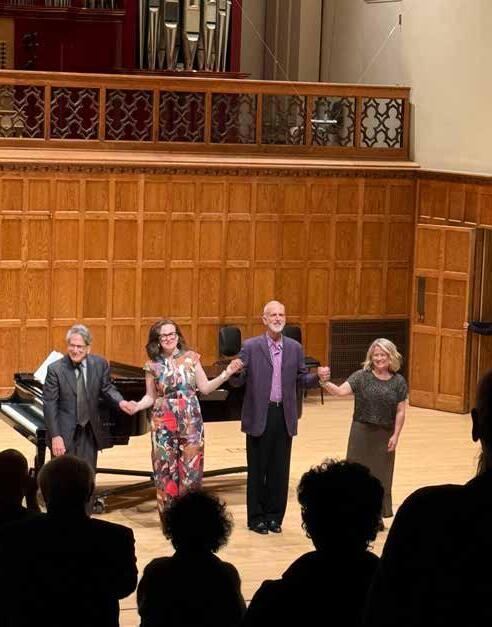
standing, I think the movie’s enduring appeal to those born after its release lies in its relationship to our present.
to possibility, to the magic of that night in Vienna. It is a sort of modern mythology: fatally separate from us but relatable, fuel
“Before Sunrise” (1995) is the beautiful 100-minute execution of a very simple story: two young adults meet on a train across Europe. Jesse, an American, has to get off in Vienna for a flight back home. Céline is bound for Paris, but out on a limb, Jesse asks her to leave with him—to walk around the city together, just for the night. Jesse tells her, “And if I turn out to be some kind of psycho, you know, you just get on the next train.”
Céline agrees. The rest of the movie is simply the two of them walking around, barhopping, and meeting strangers. Mostly, though, they just talk: about their childhoods, pet theories and dreams, their insecurities, as the pair eventually comes to terms with the fact that this will likely be their only night together. They are both alternately suave and embarrassing, but endearing above all else—two people, clearly enamored with each other, trying.
The film was widely appreciated upon release, netting director Richard Linklater awards for his direction and screenplay. As an emblem of ’90s nostalgia, “Before Sunrise” has found its way into the hearts of a generation of people born and brought up after its release—or at least the subset of that generation that uses Letterboxd. Every June 16, the day the film is set, stills from the movie take over my Instagram feed. And 30-year nostalgia cycles notwith-
Gen Z is perhaps the loneliest generation in history. We are more risk-averse than our parents or grandparents—dating less, having less sex. The existence of the situationship as a concept points to a new and systematic discomfort with communication. On a campus full of people who match with one another on Tinder without ever speaking, the popularity of “Before Sunrise” and movies like it speaks volumes.
“Before Sunrise” is alien to our social reality: pre-algorithm, pre-social media. The movie is outright against technology as being meaningfully capable of sustaining a relationship. Céline and Jesse dismiss out of hand the potential of trying to stay in touch, to call or to write. Nothing can compare. And neither of them, at any point, can retreat to check a text message or Instagram. As one five-star Letterboxd review put it: “not a phone in sight, just two hours of trauma dumping on the first date.”
Things have changed in 30 years. We can stay in touch with whoever we want—we know what that guy we met once at a party last year just had for breakfast, and we see all the pictures from our middle school friends’ vacations. But what, in terms of authentic connection, have we really gained?
“Before Sunrise” points to the existence of another way of being, of connecting with one another—throwing oneself into the world with an openness to experience and
“Before Sunrise” points to the existence of another way of being, of connecting with one another— throwing oneself into the world with an openness to experience and to possibility, to the magic of that night in Vienna. It is a sort of modern mythology: fatally separate from us but relatable, fuel for our imaginations and our fantasies. That might be what gives the movie its enduring pull.
for our imaginations and our fantasies. That might be what gives the movie its enduring pull.
Maybe the impulse is escapist. Maybe we turn to movies that show another reality so that we do not have to live in our own. May-
be our overexposure to on-screen, idealized love stories is doing to our romantic lives what pornography is doing to the sexual— draining things of their real-world appeal, as we lose ourselves in simulacra of reality.
But movies can teach us things. “Before Sunrise” is a movie, essentially, about going out on a limb—the entire plot is predicated on Jesse’s arguably crazy pitch to Céline, facing a fear of rejection that to many would seem unthinkable. It is through that courage, and that of Céline to accept, that anything happens at all.
And what happens is gloriously imperfect. The movie runs toward, rather than away from, the messiness of any human relationship, especially among 20-somethings.
Jesse can be pretentious and dismissive; Céline says some crazy things. There are awkward pauses and fights. And that is what gives the movie its magic. That is what makes it a movie about two people truly living without guardrails, open to themselves and each other. They are embarrassed but willing to be so, holding nothing back. What results will be messy, but it will also be human.
“Before Sunrise” is a parable of connection, unmediated by the forces that fuel modern loneliness, unbothered by the possibility of failure. In a world where rejection can seem life-or-death, it is beautiful to elevate media that show how beautiful things can be when we put ourselves out there—to risk it all for a conversation.
“In high school, a massive part of my identity was the DJ battle scene in California,” Marte-Wood recalled. “It wasn’t until later in life that I encountered other people who didn’t have that kind of experience tied to this conception of diasporic Filipino identity.”
After graduating from his local state school, he moved to the San Francisco Bay Area to engage with the region’s robust political activism scene and worked as a high school English teacher for a few years in East Oakland, California. It was during that time that he developed an interest in synthesizing the field of ethnic studies, which was in part informed by his own mixed-race background. This motivated

him to pursue a PhD in English with a significant focus on the frameworks of Asian American Studies and Filipinx American studies. “I got a job right out of the PhD program at Rice University in Houston, which is a huge culture shift for me, being from LA,” Marte-Wood reflected. While he loved being a part of the vibrant global diasporic communities in Houston, “There’s a legislature [in Texas] right now that has been extremely hostile to all kinds of ethnic study. I am super, super excited to be in New York.”
Having engaged in much of the recent discourse on what it means to be Asian American and who that label centers around and excludes, I was curious to learn more about Marte-Wood’s relationship with the label “Asian American” or “Filipinx American.”
“You have to confront the fact that even though the term Asian American emerged in the 1960s and 1970s, as a political identity, it’s totally now a demographic marker that you’ll see on census data.” Marte-Wood observed, “I think we have to sit with what’s lost in that kind of historical transformation.” As a mixed race Filipinx American who grew up in Los Angeles, Marte-Wood recalls that he was always asked “what he was” growing up and was often mistaken for being Latinx American. His experience with racial misidentification speaks to the gap between race as self concept and race as experiential reality. “I don’t identify as Asian American as a kind of ethnic framing for who I am. But I identify as Asian American in the political, coalitional sense,” Marte-Wood elaborated.
His current research grapples with the idea of the Global Asias paradigm. “I’m trying to expand the notion of what was once called Area studies to imagine Asian Studies and Asian American Studies as not being these static things that don’t interact with each other, but instead as areas of study that are totally implicated in each other in really interesting ways.”
This semester, Marte-Wood is teaching ENGL 101: “Reading (in) the Anthropocene,” and ENGL/ASIA 229: “Asian American Movements.” When dissecting his thought process behind his iteration of ENGL/ASIA 229, he emphasizes that his syllabus is linked to a profound sense of hope. He intends this course to be a true survey of authors, texts and moments that has played a central role within the history of Asian-American political activism and literature over the course of the late 19th and long 20th century. He hopes that his “Asian American Movements” course will inspire students to dive further into different arenas of Asian diasporic literature and scholarship on Global Asias. Marte-Wood aspires to teach courses on Asian diasporic environmental literature and 21st century Asian-American science fiction. He told me, “The goal is aspirational: to have many Asian-American literature courses on the books, you know?”
Marte-Wood is excited to teach the works of South Asian and Vietnamese diaspora because he hopes to disrupt our conceptions of cross-continental, pan-Asian relations that the current framework for Asian-American identity is built upon. For instance, the experience of Vietnam-
ese-American refugees in the wake of the Vietnam War—which differs so drastically from the first three waves of Chinese-American, Japanese-American and Filipino-American migration—challenges the idea of the existence of a singular Asian America. Marte-Wood is also interested in teaching texts that explore class differences. “There’s a lot of really incredible Hmong and Cambodian-American literature that’s coming out right now that’s problematizing the persistence and perniciousness of the model minority myth,” he elaborated. “At the same time, they’re foregrounding the economic disparities within these non-homogeneous people that we call Asian Americans.”
Next semester, Marte-Wood is teaching a course on literature about global care work that draws heavily from works by the Asian diaspora, where students will read Joanne Ramos’ 2019 novel “The Farm.” “It’s this 2019 science fictional dystopia about a birth clinic for the wealthy American elite set in the Hudson Valley where women from the Global South, a lot of women from the Philippines, become surrogates for wealthy American couples trying to have babies.” Marte-Wood continued, “A part of the goal of the intro class is to show the kind of persistent issues and political imperatives that might have happened in the 1920s and 1930s, and how approximations of those same thematic concerns get rearticulated in the present. So I’m always looking for literature in the present that’s doing that too. That’s like, you know, for better or worse, creating a narrative through line to these older sorts of moments.”
Yaksha Gummadapu Features Editor
The Hudson Valley is known for many things: beautiful hikes, sunset-hued fall foliage, quaint historical towns and even us, Vassar College! Very early on in my Vassar career, I decided to make sure to explore all of these scenic trademarks available to me within driving distance. And as I enter my senior year here, I feel an even greater sense of urgency to make sure I have done every single Americana activity the region has to offer. Due to this extreme awareness of passing time and the fact that I had never been apple picking in a part of the country known for its apple orchards—a vintage bumper sticker I got from a yard sale in Kingston poignantly asks, “Where is the Big Apple grown?”—I spent an 80-degree day picking apples at the nearby, famous Dubois Farms & Tavern.
You might be wondering how I managed to spend multiple years here without joining in on any House Team-facilitated trips or procrastinating with my friends at Dubois Farms. The simple answer is: I do not know. Maybe I did not get the emails, maybe my plans never make it out of the numerous combinations of friends in group chats, maybe I have been lazy. But maybe, just maybe, I would like to think the universe was saving the sweet first bite of a crisp Snapdragon apple picked straight from the tree to herald in the fall of my last year at Vassar.
The minute we pulled into the driveway of Dubois Farms to the tune of Noah Kahan live at Fenway Park, I knew I was not the only one feeling the fall spirit. Families and friends were getting out of cars, dressed for a crisp autumn day, minutes away from
sweating in the sweltering sun. A little girl was exiting the Dubois Farms, trailing behind her brothers, holding a pumpkin big enough to hide her torso and what I bet was a huge smile. One elderly man, wearing a shirt with “0% Liberal” emblazoned across the front, stood out to me. In the dingy red wagons visitors could use to carry their Dubois Farms produce and products, he had heaped multiple bags of handpicked green apples. Not a single red apple in sight. I wondered if he knew something I did not.
Once we paid $10 per person at the entryway, the kind high schooler manning the tap-to-pay station remained kind as she was swarmed by patrons. She informed us that if we showed our tokens at checkout as proof that we paid $10, it would be taken off our receipt. Essentially, Dubois Farms requires you to spend at least $10 on their various offerings. But speaking from newfound experience, once you try their apples and apple cider, the $10 dollar suddenly seems like an underestimation.
As we followed the unpaved path to where all the hustle and bustle was happening, I quickly realized heeled clogs may have been an impractical choice for the task at hand. After I twisted my left foot the second time, I was about to unfairly make up my mind about apple picking, against it, when I heard an acoustic guitar and blues-y voice crooning out an earthy rendition of Bill Withers’ “Ain’t No Sunshine.” No camouflaged stones, uneven ground or heels were getting in the way of me enjoying that. My ankles did not ache; I accepted the sweat trickling down my back as a last warm hello from the summer sun and basked in the sights.
While the map tells you where you can find pumpkins, apples, grapes, go on a hay
ride, pet some goats and enjoy delicious cider and food at the Tavern, it severely downplays how huge the farms are. A quick Google search led me to the Dubois Farms website, which shares that the entire Dubois Farms is spread out over 69 acres of land filled with fun and food. The same website’s event schedule let me know the live performer who saved the day goes by the name Fred Stelling. The magic of going to the source!
After taking pictures of the goats and being moved to tears by a baby petting a baby goat, we began to pick apples. Since the farm is a popular spot for agritourism in the area, the first few rows of trees were bare, but the trek was calming and had a sweet reward hidden further up the hill. We filled a bag with Empires, Pink Ladies, Snapdragons and Courtlands, sometimes taking bites to make sure we were getting our money’s worth. Once the bag was filled with too many apples for a Terrace Apartment of four college students who stock and con-
sume unlimited amounts of Annie’s Mac & Cheese, we made our way to check out. Distracted by visions of apple pies, crisps, pop tarts and even browning apple slices reminiscent of our youth soccer days, we let our instincts add a pack of a dozen apple cider donuts and a half gallon of apple juice to our bill. We showed our tokens to some more kind high schoolers and carried our spoils back to the car—so satisfied and excited that the sun was not too hot and my shoes became all-terrain qualified. As we drove back, pressing play where we stopped on Kahan’s live album, I felt like I had lived a little. I touched some grass—quite literally— explored the place I call home, participated in a beloved autumnal tradition and supported a longstanding local family-owned small business. Now, as I eat a slice of stillhot apple pie with vanilla ice cream from Stewart’s melting through the golden brown lattice into the cinnamon-laced apples, I feel very fall and very grateful for still finding new ways to fall in love with this place.

From the desk of Wren Buehler, Assistant Humor Editor
Ben Weiner War Correspondent
Facial piercings littering the sidewalks like ammunition rounds. Oatmilk, spilt and spoiled, crusted dry over asphalt. Feminist bookstores reduced to ash, the singed words of Judith Butler blown through alleyways on a wayward breeze, like the final breath of an unkept promise.
This is Trump’s America.
First, it was the matcha molotov on federal property, sending shockwaves through conservative media and leading to a vicious crackdown on barista mutual aid networks across the city. With a wave of tariffs, reserves of lavender syrup, hojicha and ethically-sourced chaga dwindled to record lows, creating unprecedented turmoil in Portland coffee shops—businesses which make up roughly 23 percent of the city’s GDP.
“The Trump administration’s project of brazen economic exclusion primed an already energized Portland populace for allout conflict,” writes Persephone Biggort, Associate Professor of Bisexual Economics at Reed College.
Less than a week later, tensions reached a
fever-pitch when a PETA-led Meat is Murder protest went south, stirring outrage, uniting Trump’s powerful pro-meat coalition and dovetailing with his Beef 2050 agenda.
Portland local, Daffodil Barns, attests that the conflict has posed major challenges for his communal care loft in the city’s center, where alternative nut butter and biodynamic produce have become scarce. Communities like his are scrambling, turning to a growing black market economy where jars of sea moss gel go for as high as $560.
“It’s like, we can’t even find ashwagandha anywhere, and now all we do is fight about the rainwater collection barrel and compost bins. It was all Plant’s idea but now she’s all mad about it? It’s so disquieting and unfair,” Barns told us.
You think you’re safe in your little Vassar bubble? No, you ignorant little shit. Fuck you. Recently, in an act of stunning charity and benevolence, Vassar admissions has rolled out a program to support Portland’s burgeoning refugee population—yeah, that little barista in the Deece wasn’t just your average stray leftist with graphic fine-line tattoos: He only made it out of his agricultural co-op by the hairs on his chinny chin chin.

Chew on that.
So look around, hold on to your loved ones, and take stock of what really matters. Pray for Portland and light the tallow can-
dles on your vigil, lest it falls to President Trump’s rage-filled steamroller militancy and the terrifying whims of Big Meat. Who knows? The Brew may be next.
Evan Seker Bored Interviewer
“Ireally wish more of my problems could be solved by just utterly removing them from existence,” lamented Madison Deruvin ʼ27 in a recent interview with The Miscellany News. She continued, stating, “Oh, I suppose I should explain what I mean,” before turning to a random stranger and whispering something. They immediately did a handstand, before slowly levitating into a nearby tree. “Now, stuff like that is fun, but it doesn’t feel real, you know?”
Here at The Misc, we did not in fact know, and were in fact (more than) slightly worried, so we decided to inquire: How did she do that?
“It’s very simple, you see. The world ought to be one’s oyster, yes? Is that not how it was ordained, in the beginning? I just made it so it was mine, and no one else’s,” said Madison in a dark, sonorous tone, whispering conspiratorially. “Since then, I see everything, and I can do anything. I would demonstrate, but I really don’t want to inflate your word count.
“As I was saying, using power just isn’t satisfying. Once I told others about my power. And I got so many friends. But only a few of them wanted to be my friend for real, and naturally, they were the few people I didn’t want to be friends with. All the cool kids just wanted to use me for my powers. I kinda got to learn how celebrities feel. So I did it again, a little different this time, hoping I could get it right. And again. One time, I had a giant big laser of pure rage, and I could fire it at anyone, whoever I wanted, and I made everyone be my friend that way. I had so many dinner parties! It was great,” said Madison,
fondly remembering when she was on top of a different world. “But it wasn’t real, well, certain things felt real, if you know what I mean.” She smiled mischievously and awkwardly reached to high-five my co-reporter, who shirked away and then nervously returned the high-five.
“So here I am doing things ‘normally’. I have a 4.0 GPA, I have a few friends, but I also have quite a few enemies. And I mess up a lot more than I used to. I mean, I’m sure I made a lot of faux-pas back in the day, but when you have a giant laser, no one really points them out. Strange how that happens.”
We made an executive decision to inquire more. It’s not often you talk to a God.
“What lessons have you learned?”
“Ah, well…you can’t dwell on the past, because you can’t change it. And people might hold your past against you. But why does it matter? It’s nicer to find people who want to try to understand you than try to appease the ones that don’t, even if they eventually end up doing so anyways. That’s what I learned from the last world, and the ones before it.”
“What made you move on from the last one?”
“Boredom. I probably won’t move on from this one, though. Let’s just not talk about the last one. I made a lot of bad choices.”
“Why?”
“Because it seemed fun at the time. The first few times you blow things up with a magic laser are really incomparable experiences, but then it just sort of gets boring, you start wondering why you didn’t spend your time doing something that could have been more worthwhile.”
“Couldn’t you just do it over again?”
“Well, yeah, but that freedom has its own
toll. You’re not really immersed in anything you do if you can just un-do it. So I try not to use my powers…but I’m also really bad at it,” she smiled, “so I only do it for the small things, but I try to make compromises: I made it so my fridge always has ice cream, but I still make myself brush my teeth, but I made it so that every time I brush my teeth, I can think 5% faster than the next-smartest person in the room for the next 8 hours. It’s good for debates.”
“That seems unfair…”
“You’d be surprised how thinking faster can mess you up. Not to be all ‘stop and smell the roses,’ but sometimes those roses are really the actual point of the walk you’re on.”
“So how often do you win?”
“Well, I mess up intentionally every now and then. It’s kind of nice how smart you can make people feel when you let them win.”
“That sounds very nice.”
“Yeah, praise me. Speaking of which,” Immediately, the person doing a hand-stand appeared out of thin air and resumed what they were doing before she spoke to them. “I really do try not to use my powers in regards to other people, and really, I shouldn’t be using them at all. It makes it all less real I think I like having to work for things, even ice cream, and the grades and the studying. It would be a lot worse, in fact, it was a lot worse, when I didn’t have to work for anything. It just got boring. And that counts for everything. Friends, work, it’s all about committing to what you’re doing, I guess. If you’re going to live, you have to really dunk yourself into it, not just passively watch. I hope that makes sense. Uh…is there anything else I can do for you?” Madison asked, presumably in a miracle-granting mood.
“Why don’t you solve climate change?”
“Oh, uh… about that… look, am I really that bad if I don’t want to interfere with the big things? Some of this stuff was set into motion long before I was born.”
“Yes, yes you are. Could you get rid of all the war, too?”
“Fine. Okay, your stupid climate is back to normal, and nobody’s killing each other anymore. Me-damnit. ANYWAY!
“My one final piece of advice is: You can’t give yourself an easy way out and expect yourself not to fall into it. Do you think my life with a giant laser of blooming, rageful magma was hard? No! But I didn’t learn anything! I only had to turn like five people into amorphous blobs for everyone else to get the hint. And when they didn’t, I just, well, it’s not really a script I tampered with, but I schemed a little, connived a bit. Oh also, when you alter people’s thoughts it also feels really fake. I just think, it’s not fun to cheat and loop-hole your way through life. There’s value in walking from point A to Point B, and if you have time stopping at Point C to watch squirrels climb up a tree. Anyone who tells you being powerful and using that power to control everything is fun is either lying to themselves or hasn’t done it enough.”
“What?” I asked. This was the first time I had spoken to Madison.
“Oh, hey! You’re what, a sophomore? Aww, you’re so young! You’ll get it when you’re older, trust,” said Madison, making a peace sign.
“Okay, article’s over, everyone out!” She proclaimed. “Wait, that was a joke, don’t worry–”
“No, it’s fine, we get it. We were kind of bored of asking you stuff, too.”
Luke Jenkins, Chloe Rogers Dairy Detectives
There we were, sunbathing in the Nircle after our Pulitzer win for Pea Milk coverage. Then, out of the blue, we saw a light from above. Someone had sent up our version of a bat signal: a silhouette of Jamaican ramen concept. We had to respond.
The signal came from the Deece. When we arrived, the masses were in heat. Why? Greek yogurt was basically gone.
The situation was touch and go. Many were seen on stretchers after fainting from calcium deficiency. Girly pops in Alo sets struggled to go on—their slick buns unslicked. Granola missed its life partner. Gut health was rapidly falling. Mass gas clouds terrorized onlookers from the lack of probiotics. Not even Flintstone gummies could save the day.
Greek yogurt now appears once a fortnight. When the small supply drops arrive, students drop down on all fours and howl at the moon. The Deece’s gay side has separated into wolf packs, students fighting over scraps. Athletes were skeptical of the thirst, but joined in to avoid losing their coveted center tables. We had to solve this—quickly.
When we took an already scheduled trip to The Misc office—to sign autographs—we noticed a familiar stink roaming. We were tingled—our journalistic instincts were piqued. Naturally, we sunk to the ground and began worming around the floor to avoid detection. Misc Editor-in-Chief Carina Cole ’26 was none the wiser as our skinny, supple bodies slithered the walls. We quaked, morphing into our true form: Dairy Detectives. Good shit.
Spewing Parseltongue, we communicated with the trapped souls in the office. A whispering figment came to us deliriously: It was the ghost of former Editor-in-Chief Allen Hale ’25 speaking in riddle. His wispy ghoul body was undulating around the room. Only we could see him floating around Ms. Cole’s snakeskin boots.
Boil, boil, toil and trouble… Seek the gurgle from leather’s stubble.” Hale’s voice was quiet but urgent. Assuming this meant the cow skins hung on the office’s walls, we pawed at the hides, looking for evidence of gurgly goodness. We found nothing. Young and hungry, we had to move on.
To recoup, we took a break. Journalism is tiring… iykyk. We performed vape tricks to pass the time. But we needed a place to ponder, to brainstorm. What better spot than the coveted Misc couches? We walked to the seediest one.
Sitting down with a squelch, our sixth sense transcended. The evidence was im-

possible to miss—splattered on our asses.
Yogurt was near.
Posing as Misc journalists (we put on paper hats), we began to probe the Executive Board for answers. Alli Lowe ’26, noted managerial whiz, was eating a bowl full of a mysteriously viscous substance. When we tackled her to the ground, we realized what was inside: the yogurt…
How had we missed this? We had naively assumed The Misc was on the side of good. Lowe had dismantled our faith in truth, bite by bite. The E.B. was responsible. Every spoonful was a shallow wound in the realm of justice. We formed a group hug with ghost Allen Hale, asking for advice in the shadow of the Harvest Moon. Our only hope was stealing back the stimulating substance.
Hale concurred. He helped us hand-sew
sturdier pockets in our modest capris. Soon they hit the floor. Our game was afoot. We grabbed a conveniently placed ladle and journeyed towards the trenches. But how would we rid the office of journalists?
We distracted them by organizing an impromptu flash mob. The mob posed as a Misc Mingle, coaxing the office one by one into the Rose Parlor. With Hale’s ghostly assistance, we collected all the gloop we could.
Escaping towards the Deece, we encountered a final hurdle in the Nircle: a capella auditions. Our flash mob, made up of rejected a capella members, realized mid-mob that auditions were taking place. They left, and The Misc’s E.B. realized their treasure was missing. The jig was up.
A chase scene ensued. Since we don’t run, we decided to steal baseball scooters to organize a last minute game of Mario Kart.
The race would end in the Deece. Us vs. The Misc. The winner gets the ‘gurt. We roared far ahead for an early lead once the race began—powered by the spirit of teamwork. The stars were our only company.
With yogurt flapping in our pockets behind us, we scootered up the Deece ramp on the final lap, skirting to a stop by Grill. We instructed the freshman lined up for quesadillas to barricade the entrance.
As they realized their defeat, Misc members released banshee screams and pounded at the doors. Bobby held them back as we slapped the yogurt onto the Farmer’s Table. Everyone—gay and straight—cheered.
The task was complete. Order restored. Don’t mind the hint of sweaty denim in your yogurt.
Until next time, Dairy Detectives.


ARIES March 21 | April 19
Yaksha Gummadapu Haver of Visions
Do not worry, you will get your work done! You will snooze your alarms, you will dilly-dally with your pals, you will pick up new hobbies, you will adopt a deer, get bitten by a tick, safely remove the tick and STILL have time to do your work. How do you do it? Teach us your ways.

TAURUS April 20 | May 20
Next time you get a call from an unknown phone number, pick it up. Introduce yourself. Ask about their well-being and family. Maybe even flirt a little. These are polarizing times. Show love where you can. You get what you give. Give them your social security number.

GEMINI May 21 | June 20
I’m so sorry, but the next 12 times you go to a coffee shop, a white, cis, straight male with no piercings or hair dye will make your drink. It will be bad. He will misgender you. He will judge your order. He might even call you sweetheart. Deece coffee might be a safer alternative.

CANCER June 21 | July 22
Hi, there! It’s all looking good for you this week. Don’t forget to do your laundry though… that would be really bad. Trust me, block out some time on your GCal for laundry. Either that or please stop wearing natural deodorant. It’s not the same. Aluminum is your friend.

LEO July 23 | Aug. 22
There is rain coming, but not from the sky. Sorry about that leak, only 45 more service requests till someone comes in, looks at it and tells you that someone else will come to fix it. All of your clothes are wet too. Oops.

VIRGO Aug. 23 | Sept. 22
Heard you’re getting married! Make sure you have flowers and someone with vested powers. Find a dear friend to be the ring bearer, and if something goes wrong with the maid of honor, do replace ‘er. This is The Misc RSVP, we’ll be in the back wearing all-white and skates, reading the ever romantic William Butler Yeats.

LIBRA Sept. 23 | Oct. 22

SCORPIO Oct. 23 | Nov. 21
You will put your right foot in. Then, you will take your right foot out. Then, you will put it back in. Now, shake it all about. You are doing the hokey pokey. You are spinning yourself about. Now again. And again. Feeling dizzy? Sorry, the song isn’t over. Again!
October break is coming up, and yours is about to be full of fall fun! Your sweaters will be itchy, and no matter what retail place you visit, they will only play Taylor Swift’s new album on repeat. Depending where you stand, the last part is either a boon or the straw that broke the camel’s back.

SAGITTARIUS Nov. 22 | Dec. 21
Go apple picking! Grab some friends, drive to an apple orchard and pick some apples! If you come across a snake, and it wants you to take a bite of an apple, do it. Then pass it to your friends to share the wealth. What the hell. It probably won’t have any consequences. Heard it keeps the doctor away.

CAPRICORN Dec. 22 | Jan. 19
Read a book this week. Don’t listen to one, don’t watch a TV/movie adaptation, don’t think about reading a book. Pick up a book and read it. I’m worried about you and also the state of literature consumption in this country. If you are looking for a recommendation, you can get every single Diary of a Wimpy Kid through the Interlibrary Loan system. The sky is the limit.

AQUARIUS Jan. 20 | Feb. 18
I see that you are in need of some relationship advice. When the clock strikes 12, it doesn’t matter a.m. or p.m., climb what remains of the sex tree and commune with ghosts of situationships that rest there. Heed them when they tell you to not have sex under a tree; it didn’t work out for them. I can’t even imagine the places you’ll be washing dirt out of. That’s all the advice you need, really. You can figure the rest out.

PISCES Feb. 19 | March 20
How low can you go? Can you drop it down, low? Can you do it real slow? No? Okay, so that’s a bad sign. I was right, you need to stretch more. Maybe do some mobility work. If it still doesn’t get better, go to a TikTok chiropractor. I bet your spine realignment video would go viral. Watch out, Cole Smith.
Ian Watanabe Assistant Opinions Editor
There is a lot of anti-intellectualism in this country. Negative attention is heaped on “liberal bubble” college campuses along with, according to The New York Times, federal crackdowns on activism and international students. Many within the United States get their news and politics from misinformation silos, while more qualified minds are dismissed. Some, when confronted about consuming fake news, will double down on their source and take it as a sign that the experts are the ones lying. It is easy to look at these trends and the damage they are doing as a terrifying new phenomenon of the Trump era. However, I believe it is more complicated than that. I think that this attitude is a consequence of long-term problems with the role of expert institutions in American society.
Today, a college degree is often seen as the bare minimum for a well-paying job. Many jobs in the service industry do not pay well, while factory and trade work is undervalued and carries physical risk. College students often move to cities when they graduate, perpetuating their robust job markets and wealth. According to Industry Week, smaller towns do not attract as much investment, and many are left with hollowed-out industries like manufacturing. Some say that the United States is past its manufacturing days, and that services, software and other degree-related jobs are its future. That is all
well and good, but if an American cannot afford college, they will be stuck in low-paying jobs, vulnerable to inflation and other market forces. In 2022, 39 percent of the college-age population was enrolled in college. Granted, there are many reasons why some people do not go to college, but the largest is affordability, according to the National Association of Student Financial Aid Administrators.
Colleges are perceived as elitist, not only financially but also in their aims and mission. Progressivism, a blanket term for social reform and equality-oriented politics, has become associated with this perceived elitism. According to Pitt News, colleges are more progressive because social norms are looser and students learn more about societal injustices. Conservatives have, for a long time, recognized this. They have taken concepts and words from college like woke, DEI and Critical Race Theory and infused them with negative connotations. As Vassar College students, we are both taught and—more importantly—shown in daily life that diversity is a great strength and that critiquing systems is important. But at the same time, many elite colleges tend to be closed off from the surrounding community. There is an assumption that the breakthroughs of progressivism made on campuses will somehow trickle down to the rest of society. Those who do not go to college do not benefit from them as college students do. It is a good thing that colleges are progressive, but they have not always been able to display the
What is ‘One Piece’?
Jacob Cifuentes Opinions Editor
“OnePiece” is the #1 best-selling Japanese comic book, or manga. It has been adapted into an ongoing animated television series—anime. It has over a thousand chapters and episodes respectively, as well as a media empire of spin-off movies, novels and video games. The seemingly simple story revolves around a group of pirates and their silly, naive captain, Straw hat Monkey D. Luffy, who are searching for a legendary treasure—the “One Piece”—in a fictional world made up of island nations. Many of these islands are allied with the World Government, an oppressive military organization that will stop at nothing to ruin Luffy’s dream of locating the mysterious treasure and discovering the secrets of the world’s history that it contains.
If you follow international news, you may be familiar with some of this recent discussion about “One Piece.” Not solely because of its international success as a manga, but as a commentary because of its story’s political consequences. Earlier this year, the Straw Hat Pirate flag was deemed divisive and a threat to national unity by Indonesian government officials per Al Jazeera. In Nepal’s capital, the seat of the state burned as the flag flew high on its golden gates per CNN. To those who have not hunkered down and taken the One Piece-pill, it may be confusing about how such a silly, even childish, show could become the face of so many movements.
The answer is very simple, really. The creator of “One Piece,” Eiichiro Oda, is a radical. My definition of a radical person is someone who tends to be ideologically opposed to the status quo. Besides Oda having a picture of Che Guevara—the renowned Argentine revolutionary—in his office, there is plenty of evidence that can
tangible worth of their ideals outside of their bubbles.
Another reason that progressivism has not trickled down is, of course, repression. A college like Vassar can teach Critical Race Theory with relative ease, but when a public high school even mentions the phrase, funding is suddenly in jeopardy. In 2022, according to NBC, Florida Governor Ron DeSantis, launched a crusade against LGBTQ+ content in public classrooms and forced curricula to claim that Black people benefited from slavery. He did this under the pretense that children were being indoctrinated. Now, even colleges are not safe from these accusations, with the Trump administration making an effort to crack down on colleges for their “woke ideology.” These crackdowns come in the form of publicized legal battles with Harvard University and Columbia University, yes, but more striking is Trump’s willingness to freeze federal funds, hurting public colleges the most. It is a twisted irony that the wealthiest colleges are insulated from federal mandates and are therefore the only ones that can freely teach progressivism. Values of equality and diversity become less accessible and concentrated in a smaller population.
It is safe to say that many Americans are wary, not necessarily of expertise, but of the institutions that facilitate it. Colleges are becoming increasingly unaffordable, and their progressivism leads to little public change but draws lots of public scrutiny. Some citizens turn to alternatives to these
institutions. Online intellectuals like Jordan Peterson, Ben Shapiro and the recently-assassinated Charlie Kirk actively position themselves as foils to “liberal bubble colleges,” debating college students just to prove conservative—and sometimes bigoted—points. These commentators do not always produce content with the best intentions. However, the fact remains that they are more accessible than the institutions that Americans are supposed to be able to count on.
How can we move forward? There is debate as to whether liberal education, with the hostility against it, will even be viable in the future. I think it can be, but it cannot go on as is. Left-leaning academics cannot keep cloistering themselves off from society, or they will truly become an elite. Community outreach is a must. Vassar has such programs, including opportunities like teaching at Poughkeepsie Middle School through the Office of Community-Engaged Learning and local Hudson Valley policy organizing like For The Many. Students can provide service to the community while supplementing their education with real-world experiences. And of course, the price of college must come down, too. These things are unlikely to happen under the current administration, so it is difficult to see a concrete path forward to regaining public trust. But if colleges can be there for communities when they are needed, then communities will support colleges and will not stand for their repression.
be found without even reading between the lines of the plot.
Upon entering the Grand Line, a sea full of threats and adventures, the Straw Hat crew faces off with a government-backed mob boss who overthrew a benevolent king by lying to the people of his desert kingdom. Why would this federal agent do such a thing? To extract the kingdom’s underground resources to fuel a weapon, of course. Sound familiar? Just before that, the Straw Hats deposed a different king who selfishly restricted access to healthcare. Hundreds of episodes later, the Straw Hats save their archeologist crewmate after she was arrested by the World Government’s intelligence agency. Oda makes it very clear that the world of “One Piece” is ruled by corrupt scumbags, not only on the local and national levels, but even the World Government is run by a cabal of arrogant, slave-owning oligarchs. The citizens of this world are forced to view this ruling class, known as Celestial Dragons, as deities. Luffy, however, knocked one of them out for trying to buy his friend as a slave. Luffy intentionally burned their flag, waged war on their government and was involved in the destruction of three of their islands. His father is also the Supreme Commander of the literal “Revolutionary Army.”
If we take a step back, it is easy to see the parallels between the real-life actions of corrupt governments, especially of our own, and the events of this story. The arcs that I mentioned earlier involve inequitable health care privatization, clandestine state-sponsored coups, violent resource extraction, mass killings of intellectuals and general empire building. The United States has committed, either directly or indirectly, every one of these actions and more—in Chile, Argentina, Iran, Guatemala, resource-rich regions on nearly every continent and even on its own people. The
World Government of “One Piece” is seemingly modeled on the U.S. style of global domination, even to the point of prioritizing the interests of its billionaire class—the Celestial Dragons.
Despite this overwhelming amount of evidence, the naysayers stand firm. A clip has resurfaced of influential steamer and leftist commentator, Hasan Piker, being featured as a guest on the anime-focused “Trash Taste” podcast. He gleefully claimed that “every single arc [of “One Piece”]... details leftist politics,” and that “Luffy is a terrorist”. Unfortunatlly, he was laughed at by the hosts and subsequently banned from the podcast due to pressure and harassment from their right-wing fans. This all occurred over two years ago, and it seems that Hasan has been vindicated in his analysis.
Messaging within “One Piece” has spurred a worldwide revolution against oppressive governments and opened up discussions about wealth and power inequality. Most sources carrying stories about these protests have labeled them as “Gen Z,” but really, they should be labeled as class-conscious. Nepal’s government was toppled after temporarily banning social media because of a trend in users criticizing the lavish lifestyles of the ruling class’ families. In 2023, 20 percent of Nepal’s population lived below the poverty line. Indonesia’s protests began after its parliament passed housing allowances for its members that were nearly 10 times the minimum wage in Jakarta.
Besides the obvious parallels, there is a much darker comparison to be made between “One Piece” and our world’s political dynamic. The World Government is publicly an oligarchic alliance between the member nations’ royalty, the navy and the Celestial Dragons. Over the course of the story, some characters learn this is a myth. The truth is that a secret king—Imu—has
had unchecked power over the World Government for centuries and sits as the single most powerful individual in the world. Who is this character analogous to? Is it the richest person, Elon Musk? A leader of an influential think tank, like Russel Vought, or a financier like Jeffery Epstein or Peter Thiel? No. As Imu’s identity is ambiguous in “One Piece,” our Imu has no identity. It is a value. It is the reason why some people get assassinated, and there’s a mass uproar, while genocides and massacres occur and few care. It is the underlying idea that some people are worth more and are entitled to more based on arbitrary lines like fame and status. We are hypnotized by this lie, but the revolutions, both material and intellectual, throughout history have shown that we can break free from this illusion. This is why “One Piece” provides such a radical and impactful message that resonates with people around the world.

Cici Zhang Guest Columnist
On Sept. 22, U.S. News & World Report released its annual rankings of colleges and universities. Williams College once again topped the liberal arts list, while Vassar College moved from No. 12 last year to No. 13 this year. Furthermore, Vassar is now tied with seven other institutions at the same ranking. For some students, especially those of us who grew up in cultures where parents treat rankings like scripture, that shift might sting. But here at Vassar, I have found that the people around me barely blinked: Professors were teaching, students were laughing on the residential quad, and the line for Gordon Commons was as long as ever.
I used to be the kind of student who cared too much about the numbers. Growing up attending a private school, I inherited the ranking obsession that so many Asian parents pass down to their children. Every September, I would pore over the U.S. News and World Report college lists as though they held some divine authority over my life. When Yale University rejected me during the Early Action process and Rice University did the same during Early Decision 2, I felt crushed. It was only after
long conversations with my counselor that I began asking myself what kind of college experience I actually wanted. The picture that came to mind was simple: a small but sweet community where I could study and live among friends. That vision is what led me to Vassar.
Now that I have been here a month, I already know I have made the right choice. In just a couple of weeks, my floor has become a family: Our weekly community circles have formed true friendships, and we have already celebrated four birthdays together. President Elizabeth Bradley invited us to come explore her house, served dessert and made it feel like home in the middle of campus. My Jewish Studies professor even had me over to her house for office hours. We talked for a long time and she sent me home with a book as a gift. None of these moments can be quantified by U.S. News, but this is what it means to learn and live here.
That is precisely the argument Alan Blinder made in The New York Times that U.S. News relies on measures that critics say reward wealth and reputation rather than actual educational quality. If the metrics were designed to reward resources, selectivity and alumni-giving, then they miss what is more significant to students: the re -
lationships of trust and mentorship and the sense of belonging to the institution. Vassar falling from 12 to 13 does not indicate a drop in quality; rather, it shows the shortfalls of the ranking system itself.
The underlying concern is what academics Eric Ketzan and Martin Paul Eve describe as the “anxiety of prestige.” In their research in literary culture, they describe how both institutions and individuals eventually develop a “haunting” concern over their relative status and cannot help but measure themselves against whatever external gatekeepers of prestige exist. That is exactly what rankings instill: an anxiety that forces students like my younger self to equate worth to numbers. However, that anxiety disappears once you engage with the kind community fostered at Vassar. Enjoying a month of shared meals and latenight conversations is worth so much more than a higher ranking on a list.
Instead, there is a different way to think about what matters. In a recent interview with Harvard Gazette, sociologist Robert Putnam reflected on his book, “Bowling Alone,” explaining that what matters is not prestige but “social capital,” which is defined as the networks of trust, reciprocity and belonging that bind communities together. Vassar’s mission embodies this: “To make
“None of these moments can be quantified by U.S. News, but this is what it means to learn and live.” here.
accessible the means of…a liberal arts education,” and to instill “intellectual curiosity, creative endeavor, community engagement and informed, independent judgment.” That is the true measure of a school—a measure that rankings cannot reflect.
Vassar has pursued this mission from the beginning as one of the first women’s colleges. It has never defined itself by the outside load of validation, but by whether it offers people the space to become who they are. In the span of just a month, I have seen the mission alive everywhere: in a professor’s gift, in the welcome of a president, in birthday cakes cut on a dorm floor. If those experiences do not count for U.S. News, it is not Vassar; it is U.S. News that is flawed.
Rankings will rise and fall. But the measure of a college is not whether it is 12th or 13th. It is whether, when you walk across the quad, you feel like you belong.
Soren Fischer Senior Editor
Is it the responsibility of corporations or consumers to mitigate the effects of the climate crisis? When asked, most will say corporations and wealthy countries. Given how green products and sustainable practices cost considerably more, consumer blame for unsustainable habits is a difficult accusation to defend. Killing the world and your consumers to turn over a profit does not position oneself for a favorable public image—yet somehow, corporations do just that and get away with it. PR statements, greenwashing and performative pledges are easier to produce than actual systemic reform.
Even then, there are still certain behaviors that can easily reduce one’s ecological footprint.
Meanwhile, is effective waste management at Vassar College the responsibility of the administration or students? From what I have observed over my time at Vassar, it is both. For the purpose of narrowing down my argument, this will focus on the waste management hierarchy, not sustainable energy use at Vassar. Additionally, I write this piece on the backdrop of observations, not explicit policies the College deploys. Then again, actions speak louder than words.
Vassar has all of the right tools to make for effective waste management, the issue is the opt-in nature of it. Because of this opt-in structure, which does not prioritize student education, how can we be surprised when folks do not reduce, reuse or recycle?
Anyone who has been to a Town House lawn party has seen the aftermath: It is not a pretty sight to see, given the enormous volume of cans left out—many of which we can assume will not be handled for adequate recycling.
Waste management practices have, of course, evolved significantly over the years. Initially, waste was disposed of without much regard for environmental impact. Growing concerns about pollution, however, and the depletion of resources put us in a
not-so-opt-in reality. One person reducing their environmental impact means nothing when another consumes and creates the wasteful equivalent of five people. Collective action and education are the only effective models for a non-radical attempt to mitigate climate change and rapidly reform the way we approach regulation.
What once was treated as a private or local issue has now become a global crisis of equality, justice and survival. Climate change is not just about rising temperatures—it is about food systems, water access, housing security, public health and the stability of ecosystems. And all of that ties back, directly or indirectly, to how we consume and discard
At Vassar, we already have compost bins, recycling containers, donation stations during move-out and various student-led sustainability efforts. So the infrastructure exists. But infrastructure alone is not enough. If there is no education, if there is no sense of collective ownership, the bins become decorative
Let us talk about the compostable containers used at the Retreat and Gordon Commons. These single-use items are presented as sustainable, but in practice, they are often performative. To my knowledge, there are only two compost collection points on campus: at Gordon Commons and the student apartments. And even these do not clearly communicate how compost is processed. Without clear signage and widespread education, compostable containers end up in trash bins. There is a reusable container initiative—“Green2Go”—but it is poorly publicized. The only advertisement I have seen is in a biweekly dining email, linking to a form that no longer accepts responses. This is exactly what I mean by “opt-in” sustainability. If students have to dig to participate, most will not.
Worse still, recycling bins on campus are frequently misused. Greasy takeout containers, food waste and other contaminants ruin the effort of others. All it takes is a handful of people who either do not know
better or do not care—and the effort of dozens goes to waste. Literally.
That is where the role of the administration becomes critical. While students should absolutely take responsibility for their actions, the institution has the unique power to shape systems that make sustainability the default, not the exception. Vassar can incorporate sustainability into the curriculum, orientation and dorm programming.
Why not make waste management education a part of the First-Year Experience? Why not incentivize proper waste sorting with dorm competitions or display public metrics on sustainability efforts?
Yes, college is meant to be fun. But it is also meant to prepare us for the future— and the future is a dying planet, unless we change course. Culture change is difficult, but not impossible. We need to move from passive participation to active accountability.
That said, students are not off the hook. We are capable of reading signage. It takes 10 seconds to separate recyclables from trash. This is not about being perfect environmentalists—it is about meeting the bare minimum of civic responsibility, especially in a space where the tools are already present. When students choose laziness or apathy, they are not just creating more work for custodial staff; they are actively undermining the community’s attempt at sustainability.
We must also consider privilege in this equation. Many students at Vassar come from areas where composting or recycling was not available, or was not taught. I first learned sustainable habits in my high school AP Environmental Science class, which even got my family involved in composting.
So no, we cannot assume universal awareness. But we can build a culture of shared learning. Peer-to-peer education, open discussions in classes or House Team meetings and club involvement can all play a part in closing the knowledge gap.
Ultimately, we cannot frame waste man-
agement as an individual choice. The consequences of inaction affect everyone. Just as the global climate crisis cannot be solved by asking folks to ditch plastic straws, effective campus sustainability cannot be fixed on the efforts of a handful of eco-conscious students.
Everyone—students, staff, faculty and administration—must work together to ensure sustainable practices are the default, not the exception. Efforts at Vassar are only a tiny piece of the puzzle. True change needs to scale from campus to Poughkeepsie, to New York, to the country and then globally. The United States, along with a small number of other countries, has disproportionately caused ecological collapse—yet the burden is felt in regions least responsible.
If Vassar wants to be a socially responsible institution, that must be reflected in its practices—not just its mission statements. We cannot continue treating sustainability as an optional lifestyle or an aesthetic. The climate crisis is not looming. It is here. Waste management, however small it might seem in the grand scheme of things, is a tangible, immediate way to take action. It is one of the few areas where everyday decisions compound into collective impact. Therefore, I conclude that effective waste management is not a choice—it is a moral obligation.

Our goal with Brewers Ballin’ is to feature Vassar athletes who starred for their team the week previous to publishing. If you would like to nominate an athlete, please email hfrance@vassar.edu.

Name: Grace Wiley
Year: Junior
Team: Field Hockey
Stats: Wiley has been the anchor of the Brewers efforts so far this season, holding down the squad’s defensive efforts between the posts. The team opened Liberty League play against a nationally ranked Ithaca College squad. It was a tight contest where the Brewers had constant effort on the Bombers. In the waning minutes of the first half, Vassar’s Sophia Jammar ’29 netted the eventual game winner while Wiley locked down the goal, including a critical save with just five minutes left in the game.
Statement: “This season has been an incredible start for Vassar Field Hockey! The best thing so far has to be beating our rival, Ithaca, at home. We haven’t beaten Ithaca the entire time I have been at Vassar and it felt so incredible to get to do that with this team! ... Our team has improved exponentially since we started in August and I’m so proud of everyone for putting a tremendous amount of effort into this season. All our hard work has definitely started to pay off and it feels so good to have these big wins to show our progress. I’m so excited to continue conference play and the VCFH revenge tour has just begun!”
Women’s volleyball beats Clarkson in historic victory
The Women’s volleyball team beat Clarkson on Oct. 4 for the first time since 2007. Francesca Medrano ‘27 set a new career high in digs and assists with 42 and 22, respectively. Maura McAusland ’27 continued her stellar campaign with 22 kills, a new career high.
Women’s soccer opens league play in fashion
The Brewers defeated No. 24 ranked RIT on Oct. 24 in a decisive 2-0 victory. Riley McGrath ’26 added to her strong senior campaign with her fifth goal of the season while fellow veteran Rebecca Rodriguez ‘26 cemented Vassar’s lead with a penalty kick goal. in the 32nd minute.
Men’s soccer continues home streak
The Men’s soccer team defended Gordon Field once again on Oct. 1 & 4 with Liberty League victories over Bard College and RIT. The squad improves to 5-0-1 at home this year. The Brewers play Union College on Oct. 8.
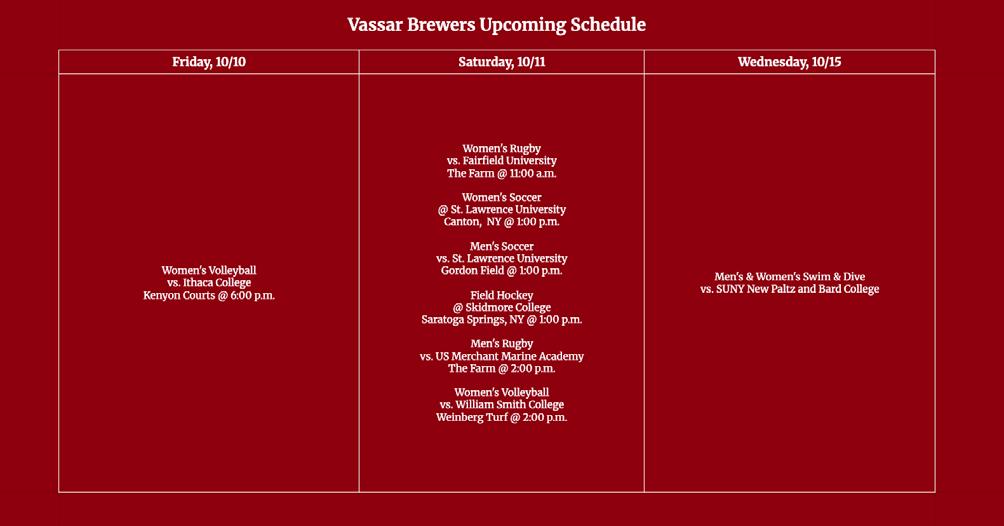
Continued from Regatta on page 1
resent the United States of America at the 1936 Berlin Olympics, going on to win gold at the Nazi-dominated events.
In 1949, the IRA Championship Regatta moved after half a decade of racing in Poughkeepsie. The event jumped around from Marietta to Syracuse to Camden. Today, the championship race rotates locations.
In 1950, for the locals of Poughkeepsie, losing such an illustrious event was economically devastating. The tens of thousands of spectators that flocked to Poughkeepsie every year paid for hotels, dining, taxi, shopping and more. The local business owners in Poughkeepsie collaborated with Hudson River Rowing Association to bring back the event for high school crews in the area, hoping to revive the regatta. While colleges did not initially return, the event gained traction, and functioned as the New York State High School rowing championship until 2000, when the event moved upstate to Saratoga Springs. There were a couple decades without a Poughkeepsie Regatta on the Hudson river, until 2019 when the Hudson River Rowing Association collaborated with Mid Hudson Rowing Association to revive the event for crews in the area.
Bringing the event back to life has been no small task. Bill Davies, Head Coach at Mid Hudson Rowing Association and Assistant Coach for the Vassar men’s and women’s squads [Disclaimer: France is captain of the Vassar men’s crew team], spends months every year preparing for the event. “We start in February. I’ve got a task list, a
spreadsheet, month-by-month of all the tasks we have to accomplish. So we start in February, set the date, and assign basic responsibilities,” Davies told The Miscellany News. “So we have to start advertising. We probably have 40 volunteers to make it run.” While the event might not attract the same amount of people as it did in the early 20th century, Davies and his team work with local businesses such as Adams Markets, Smith Bros. Pizza, Prime Print Shop and more to sponsor the event, and leverage the local rowing community to organize, referee and lead the racing.
The Regatta was an immense success, according to Davies. “The weather was perfect and everyone had a great time!” Aside from a 30-minute delay due to heavy fog, the racing was seamless. The event wrapped up around 1:30 p.m. following successful racing from junior crews to older masters crews. Greenwich Academy was of the stronger squads representing junior teams, while the Hudson River Rowing Association led the masters field. But with such calm conditions and smiles all around, everyone was a winner.
While the “Poughkeepsie Regatta” might not be the same spectacle it was over a century ago, racing down the same water where such regarded crews made history will always be special. Whether it’s the Olympic Championship eight crew, four middle schoolers making their rowing debut or a crew of 70+ year-old masters crossing the finish line for a final time, and everything in between, the four-mile stretch from the Culinary Institute down to the Walkway
Bridge will always be a revered course, etched into rowing history.

Isabel Holmes Guest Columnist
This past weekend, Vassar Women’s Volleyball defeated Clarkson University in four sets for the first time since 2007, and achieved another five-set win on Sunday against SUNY Potsdam. As they begin conference play, the Vassar women’s volleyball team is led by a new addition, Coach Tyler Blank.
Blank started playing volleyball as a high school student in Rochester, New York. He continued playing volleyball as a setter at
Rivier University in Nashua, New Hampshire. After graduating, Blank started his career in coaching at Nazareth College back in Rochester as an assistant coach for five years until he moved to Manhattanville University. At Manhattanville, located in Purchase, New York, Blank led the men’s and women’s volleyball teams for three seasons before accepting a position here at Vassar College.
In July 2025, Coach Blank joined the Vassar community by accepting a position as the new head coach of women’s volleyball. Being a fall sport, the women’s team came
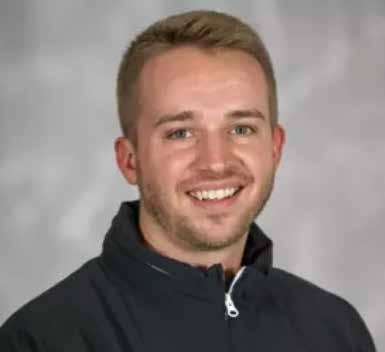
to campus two weeks ahead of the school year to start their pre-season and non-conference games. With a 13-3 record, Coach Blank is currently leading this team into their conference season with the goal of seeing the court at the Liberty League playoffs.
Coach Blank brings an excited and hopeful energy to the team. He applauds the team’s commitment and the success of the team thus far: “I really couldn’t ask for a better start with this group.”
With this new group, Coach Blank emphasizes the importance of building trust and strong relationships with players in their entirety—not just on the court.
Coach Blank works together with his players to identify areas where the unit might improve, especially after tough losses. By approaching results with a growth mindset, Coach Blank is able to keep positive momentum throughout the season. This way, losses that might be perceived as setbacks to a team’s season are seen as learning opportunities. He says, “Winning is awesome, but those matches that we are losing, we’re really showing up and getting good pieces out of that.”
When it comes to values as a coach and a leader, Coach Blank emphasizes trust within the team. By practicing honesty and good communication, Coach Blank is fostering an environment that represents these values. He identifies himself as a point of trust for the team: “What I bring is someone that the team can trust and someone that they can learn from. I try to be an open book and as authentic as possible with the team.” Blank explained that these values are central for a communicative team, and are important to understanding players as holistic people and not just athletes: “I want to create an open environment in practice where we can encourage our stu-
dent-athletes to thrive and grow as not just athletes but as a part of the Vassar community.” Coach Blank encourages his athletes to practice self-advocacy and confidence to promote an open environment that brings out the best in the whole team. Blank also believes it is important and exciting to get to know players beyond practices: “It’s really fun to be able to enrich their lives through sport, but learning about their lives outside of volleyball is one of my favorite things to do.” This open environment fosters a safe, welcoming and positive culture that keeps the team motivated during a promising upcoming season.
Looking forward, the team has an exciting month leading up to the Liberty League playoffs. The playoff format consists of the top six teams in the league, with the number one overall seed team being the host. After an energetic start to the season, Coach Blank is most excited to see where the team ends up in this year’s conference championship. Vassar women’s volleyball last won the Liberty League championship in 2018 and this year is a great opportunity to seize the title of “Liberty League champs” once again. The team that wins the Liberty League then has an opportunity to play in the NCAA tournament, and the rest of the teams get what Blank explains are “at-large bids” to get a chance to play in the NCAA tournament.
Coach Blank is an exemplary figure for how to lead with encouragement and honesty, and how curating a transparent and open team environment is key to the success of every player. Vassar women’s volleyball has a lot to look forward to this season, and Coach Blank is leading with support and encouragement. To see them in action, stop by this Friday at Kenyon for a “pinkout” game against Ithaca College!
Vishnu Lakshman Guest Columnist
Whatdoes it mean to reward individualism in a team sport when success is based on contributions from everyone? Every year, the Ballon d’Or, soccer’s most coveted individual prize, is awarded to a player who is seen to have performed remarkably and elevated their team’s performance. Rewarding individualism in a team sport, however, has naturally sparked a debate of whether the award is a truly accurate indicator of the greatest player of the year in a sport that heavily banks on everyone’s contribution, or if it is just an individual popularity contest that simply serves as an ego boost for players. For the 2024-25 year, the Ballon d’Or was awarded to the French attacker Ousmane Dembele. The race was considered one of the most competitive since the Messi-Ronaldo era, where one of the two of them won it for 10 straight years. And for Dembele to have come out on top would have been considered a far-fetched dream even two years ago.
Dembele has witnessed considerable fluctuation in his performance throughout his career. Coming through the ranks at Stade Rennes, he moved to talent-farming Borussia Dortmund at the age of one. He caught everyone’s eye with a breakout in the 201617 season of six goals and 12 assists, as well as being named in the Bundesliga team of the season and winning the league’s Rookie of the Season award. With his potential brilliance looming large, Barcelona signed him the following year for a stellar 148 million euros, the second-highest transfer fee
in history at the time, only behind Neymar’s 222 million move from Barcelona to Paris Saint-Germain (PSG). However, his time at Barcelona was injury-plagued and performances far below the promise he had shown when the club bought him, and he soon fell out of favor. Then, in 2023, he moved to the French Giant PSG just as they were trying to reinvent themselves and stop paying obscene amounts of money for bigname stars that underperformed.
As Dembele transferred in, Neymar and Messi transferred out to Al-Hilal and Inter Miami, respectively, and in the following season, Mbappe also left for Real Madrid. He had a slow start, with only 17 out of 34 league starts in his opening campaign in the 23-24 season. He quickly ramped up from there, and as the big names kept leaving, Dembele played a bigger role and front-running PSG’s success. This year, while he did not have the most eye-catching start to the season, he went on a three-month run over winter where he was unstoppable, credited mainly to the central forward role he was moved into. Additionally, in the playoffs of the Champions League, the most prestigious tournament in club soccer, he scored important goals against Liverpool and later on against Arsenal: two in-form teams that were both strong title contenders. There were many players who deserved the award, but obviously not all of them can get it. And in a nomination determined primarily by qualitative means, the margins of difference are small and sometimes hard to define and justify. So while Dembele’s performance surely deserved the award, he was not the only correct choice.
One key determining factor for Dembele beating out the field could have been winning the Champions League, since the title holds considerable weight. In terms of domestic success, PSG were never going to get challenged in Ligue 1, considered the lowest quality league among the top five in Europe. So, that could not really be used as a metric, while sometimes it can in other leagues like the English Premier League. Some of the other worthy candidates were Lamine Yamal, who is considered to have placed second in the standings; however, many felt that at 18, it was probably too early to crown him the best in the
world. Another was Mohamed Salah. If winning the Champions League did not play as huge a role in determining the winner as it did, Salah, with a tally of 47 Premier League goal involvements at age 33, would have been as dramatic a narrative as Dembele.
In the end, irrespective of how fair or accurate the metrics for choosing a Ballon d’Or winner truly are, Dembele’s story stands out for what it represents. From being labeled injury-prone and a wasted talent to reinventing himself as the genius spearheading PSG’s attack, his journey is an inspiration worth celebrating.
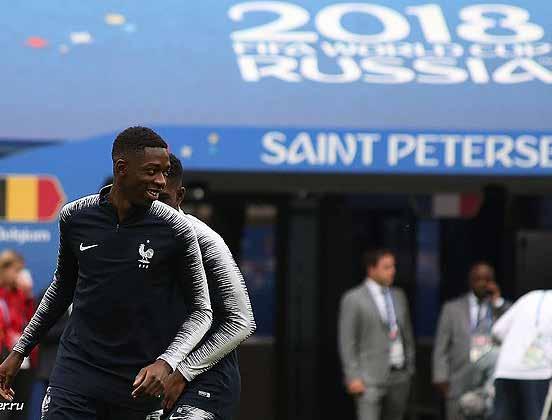
Ben Kaplan Assistant Arts Editor
It sure was an interesting week in the NFL, especially if you were winning in the fourth quarter or you were a previously thought-washed quarterback with the last name Jones. The overall narrative of many games this week was that if you were a team starting to face roadblocks, then time finally ran out and failure truly set in. On top of that is a continued stack-up of injuries across the league, making it clear which rosters can survive the brutal sport and possibly be contenders by the season’s end.
The week began, though, with two of the more boring games of the season so far. The Cincinnati Bengals, though still retaining their elite receivers in Ja’Marr Chase and Tee Higgins, are laughably weak without quarterback Joe Burrow, who is still recovering from turf toe. This left back-up Jake Browning to face a fairly even Denver Broncos team, who, though led by a young and still adapting quarterback in Bo Nix, nearly shut out the Bengals 28-3. The second half of this double header was the languishing Miami Dolphins versus the—at this point sad—New York Jets. Though ending as a one-possession game, it was really all Miami most of the way until receiver Tyreek Hill obliterated his entire knee and was taken off the field. Now out for the season, Hill’s time as a Dolphin is all but over, and this team continues to spiral just like quarterback Tua Tagovailoa’s sanity after all the concussions.
Thursday Night Football had the first of a few upsets and close games this week, with the San Francisco 49ers and their truly cursed injury luck having to face the Los
Angeles Rams. This game saw former New England Patriots quarterback Mac Jones start due to Brock Purdy also still recovering from turf toe, and he had to face the elite duo of elderly but still deadly accurate quarterback Matthew Stafford and receiver Puka Nacua. But, despite missing their starting quarterback and a bevy of other pieces, the 49ers did it. Christian McCaffrey proved he is still an elite running back, and Jones continued to step up, with a huge 342 passing yards. This was a super close game, though—do not get that twisted. And the Rams, led by a monstrous 389 passing yard game from Stafford, would have won if it were not for a late 4th quarter fumble right on the goal line by the Rams.
Moving on to Sunday, there is a lot to cover. The Minnesota Vikings and Cleveland Browns faced off in London, where a close game ensued largely due to both teams still having no clue who their starting quarterbacks should be. A clunky game overall ending in a 21-17 Viking win, along with a Viking field goal possibly blocked by a recording drone. Then, in one of the bigger upsets we have seen so far this season, Nix and the Broncos went on the offensive. Reigning Super Bowl Champions should be a moniker that brings stability, but the Philadelphia Eagles have been under scrutiny lately because of their continued lack of passing ability and frustration among top receivers over their limited role in this play system. One of the biggest complainers, wide receiver A.J. Brown, found himself laying on the ground in the endzone at the end of the fourth quarter, looking up at an 18-0 run by the Broncos that clinched the game for Denver for a final score of 2117.
Less interestingly, the Dallas Cowboys
stomped on the Jets 37-22, and the New Orleans Saints took down an equally mediocre team in the New York Giants. Giants quarterback Jaxson Dart still showed promise for the organization, which they are in desperate need of following the season-ending injury to elite receiver Malik Nabers. The current most beloved comeback story of the season so far is quarterback Daniel Jones absolutely annihilating the Las Vegas Raiders 40-6 with his new team in the Indianapolis Colts. Raiders quarterback Geno Smith threw two interceptions and zero touchdowns.
The now Tyreek Hill-less Dolphins fell to the pretty bad Carolina Panthers… yeah, not too interesting. What is interesting is how sad the trajectory of this Baltimore Ravens team is, who lost 10-44 versus the Houston Texans and now sits at an abysmal 1-4 record to begin their season. Already underperforming before his injury, they now lack quarterback Lamar Jackson and their pre-season predictions of being Super Bowl-bound continue to crumble. Back-up Ravens quarterback Cooper Rush threw for three interceptions and zero touchdowns, while Texans quarterback C.J. Stroud finally got himself together after a 1-3 start, throwing four touchdowns and zero interceptions.
Sunday afternoon kept rolling as Cam Ward, the #1 overall pick and quarterback for the Tennessee Titans, finally delivered a victory with an unreal 16-0 run in the fourth quarter to beat the Arizona Cardinals 22-21, including a crazed fumble turned touchdown. The Washington Commanders are very happy to have quarterback Jayden Daniels back, who had a respectable 231 passing yards and oversaw a confident 27-10 win over the Los Angeles
Chargers. Jared Goff and his bevy of weapons in the Detroit Lions offense had a clean 37-24 win over the still-reeling Bengals, with Browning throwing three interceptions but at least had three touchdowns as well and a better performance from star receiver Ja’Marr Chase, who had two touchdowns himself.
One of the most electric games of the season occurred between the Seattle Seahawks and Tampa Bay Buccaneers. This was an elite quarterback battle, as Baker Mayfield threw 29/33 for 379 passing yards and two touchdowns, while Sam Darnold—still impressing after his breakout last season in Minnesota—threw 28/34 for 341 passing yards and four touchdowns. This game looked like a possible sure-fire win for the Seahawks, going down the field tied at 35 with a minute left, looking for a field goal… until Sam Darnold threw his first and only interception of the game within their side of the field, handing the Buccaneers a fresh drive and a walk-off field goal to win the game 38-35. Mayfield is likely to enter serious MVP talks soon if these performances continue, along with his Buccaneers sitting at 4-1 despite various injuries.
The final game of the day was the Patriots against the Buffalo Bills. To a New Englander like me, this game was a beautiful event. Quarterback Drake Maye outperformed the reigning MVP, Josh Allen, throwing 273 yards while former Bills player Stefon Diggs went off with 146 yards, more yardage than any Bills receiver in the game. It was a tough, gritty game that was won off a majestic 52-yard field goal that saw the Patriots beat out the Bills 23-20, leaving the last undefeated team (Eagles were undefeated too until today) reeling and the league in shock.
By: Phoebe Bergan

ACROSS
1. 1. Fishy group, abbr.
4. Sound of relaxation
7. “Crying in _____” (Michelle Zauner memoir)
12. School program in the War on Drugs
13. Original friend of Dorothy
15. _____-Loompa
16. Never _____
17. *Actor known for playing with Legos and Nintendo
19. *Author known for his activism in the civil rights and gay liberation movements
21. Audibly shocked
22. Raphael’s weapon in “Teenage Mutant Ninja Turtles”
23. What’s doubled, in a Mondelez cookie
27. Chicken tender?
28. Encourage (on)
31. Not LRG
33. Juilliard deg.
34. What a lot may have a lot of
37. Staple of satirical news
39. Form... and when on Vassar

campus, a clue to starred answers
42. Word before “park” or “song”
45. Original name for J.F.K. Airport, and Vassar theater ensemble
49. Redhead rudely called “Weasel”
50. Regret
53. Bubble trouble for many high schoolers
54. Celebrity stylist Roach
55. Cooler brand
57. “i can’t believe u”
59. Oklahoma city
61. *R&B singer known for her collabs with SZA and Bakar
65. *Modern dancer known for his humorous and inventive choreography
68. To weaken, in online slang
69. Asia’s _____ Mountains
70. Pop!
71. Monkey mimics
72. Eldest of the von Trapp children
73. Add/drop period, for short 74. Reason to wrap it up?

DOWN
1. Jason Derulo’s “_____ Love” or Rihanna’s _____ X Fenty, for two uses
2. Reduce to ashes
3. “_____ to Never Growing Up” (Avril Lavigne song)
4. Rhyme scheme of the first verse of “Let It Go”
5. Gag reflex?
6. Throws up
7. Pueblo tribe
8. Early times
9. Q&A that often leads to 24-D
10. Work write-up, abbr.
11. Tit for _____
12. Olivia Rodrigo ballad with French title
14. King in a touching story?
18. Do the butterfly, say 20. Spirit
24. See 9-D
25. Floating disc
26. Cheesehead or deadhead
29. Long-nosed fish
30. Dad to Margo, Edith, and

Agnes
32. “Get back, _____ … Go home” (Beatles lyric)
35. Mental manual, casually
36. Follower to poli or cog
38. Word in four U.S. state names
40. QB stats
41. Form ending?
42. Have a go at
43. Groundbreaking invention?
44. Tolkien creature
46. Like an open secret
47. Lost some hair
48. Towers over
51. West Point inits.
52. Golden girls of Hollywood?
56. Mallorca y Menorca
58. Choppers, in military slang
60. Arm bones
62. Gas or elec., e.g.
63. Went by bus or bicycle
64. Cling _____
65. Bud
66. Express dropshipper
67. Great Basin indigenous people
ANIMALS
BAT, BEAVER, BEE, BONOBO
SPORTS EQUIPMENT BALL, BASES, BASKET, BROOM
PESTER
BADGER, BORE, BOTHER, BUG
MOTIVATIONAL POSTER WORDS BE YOURSELF, BELIEVE,